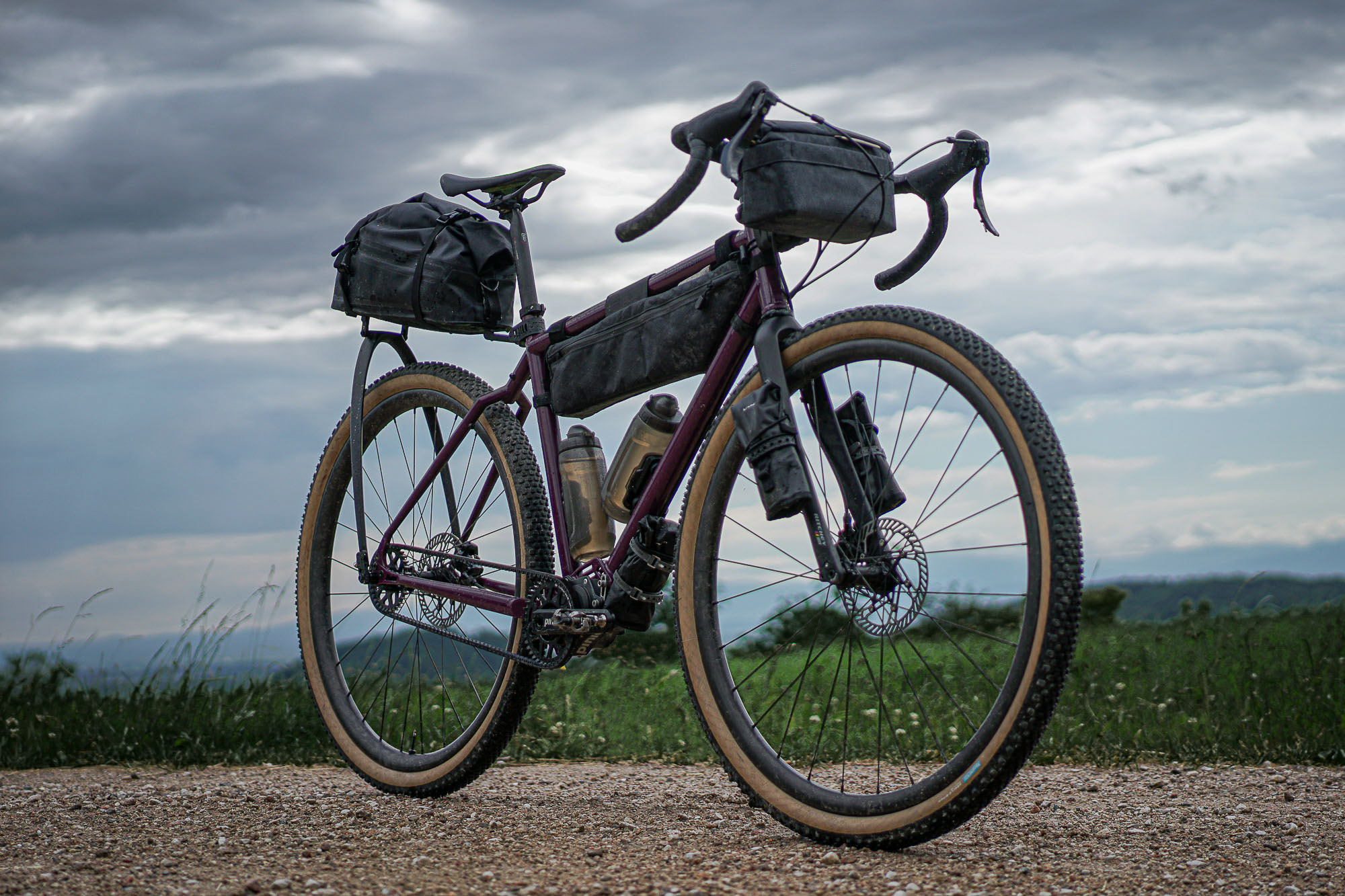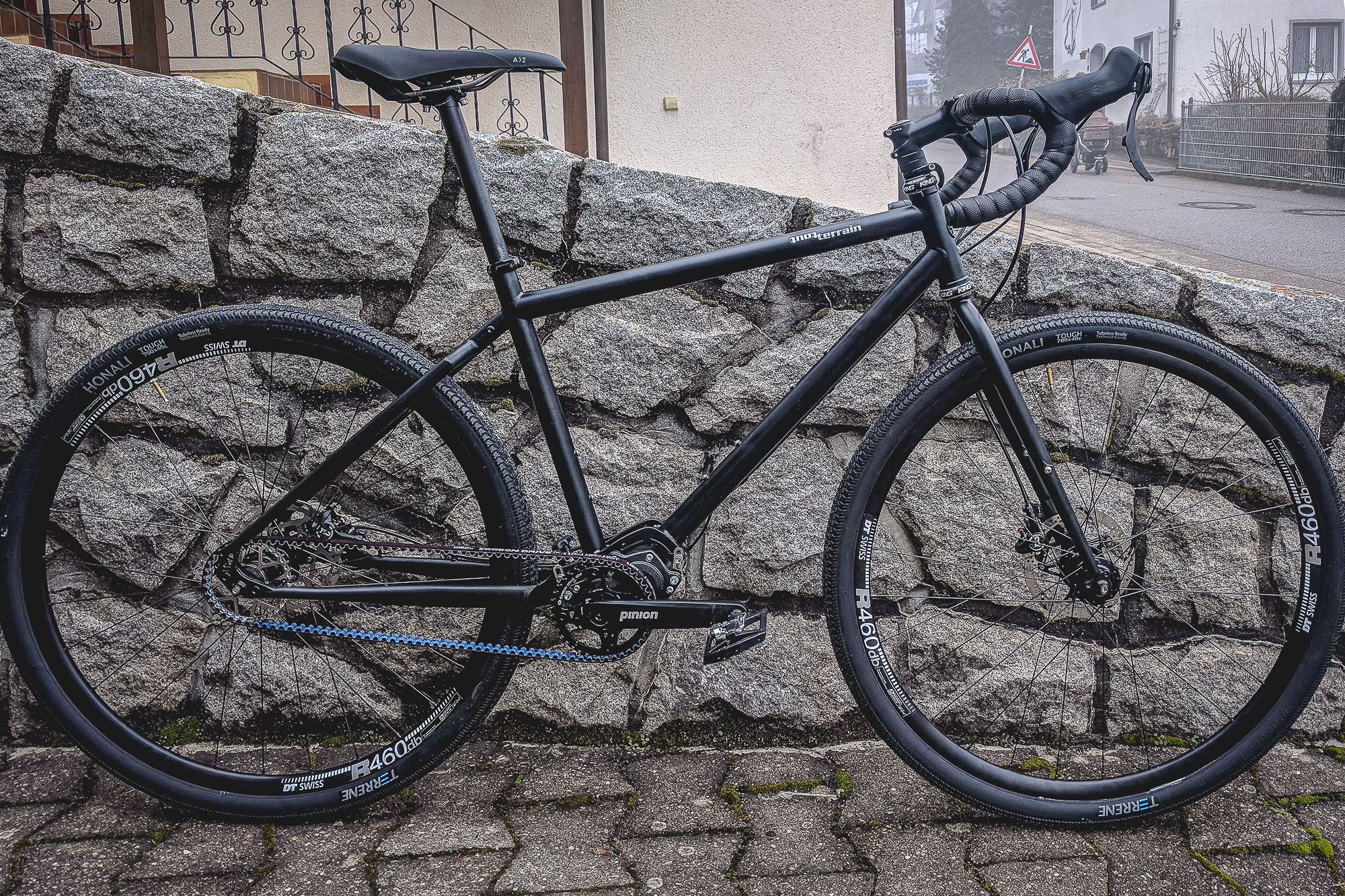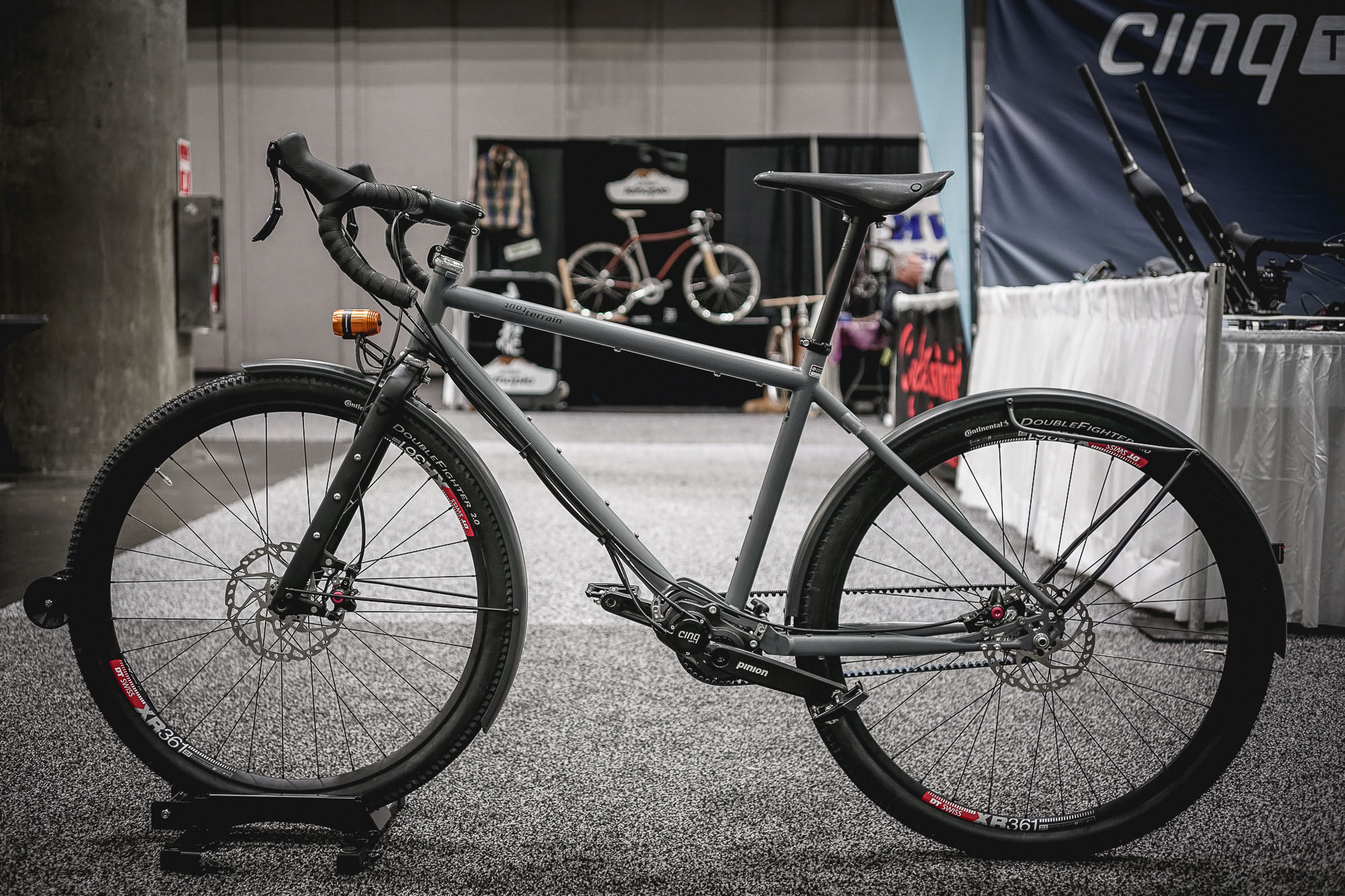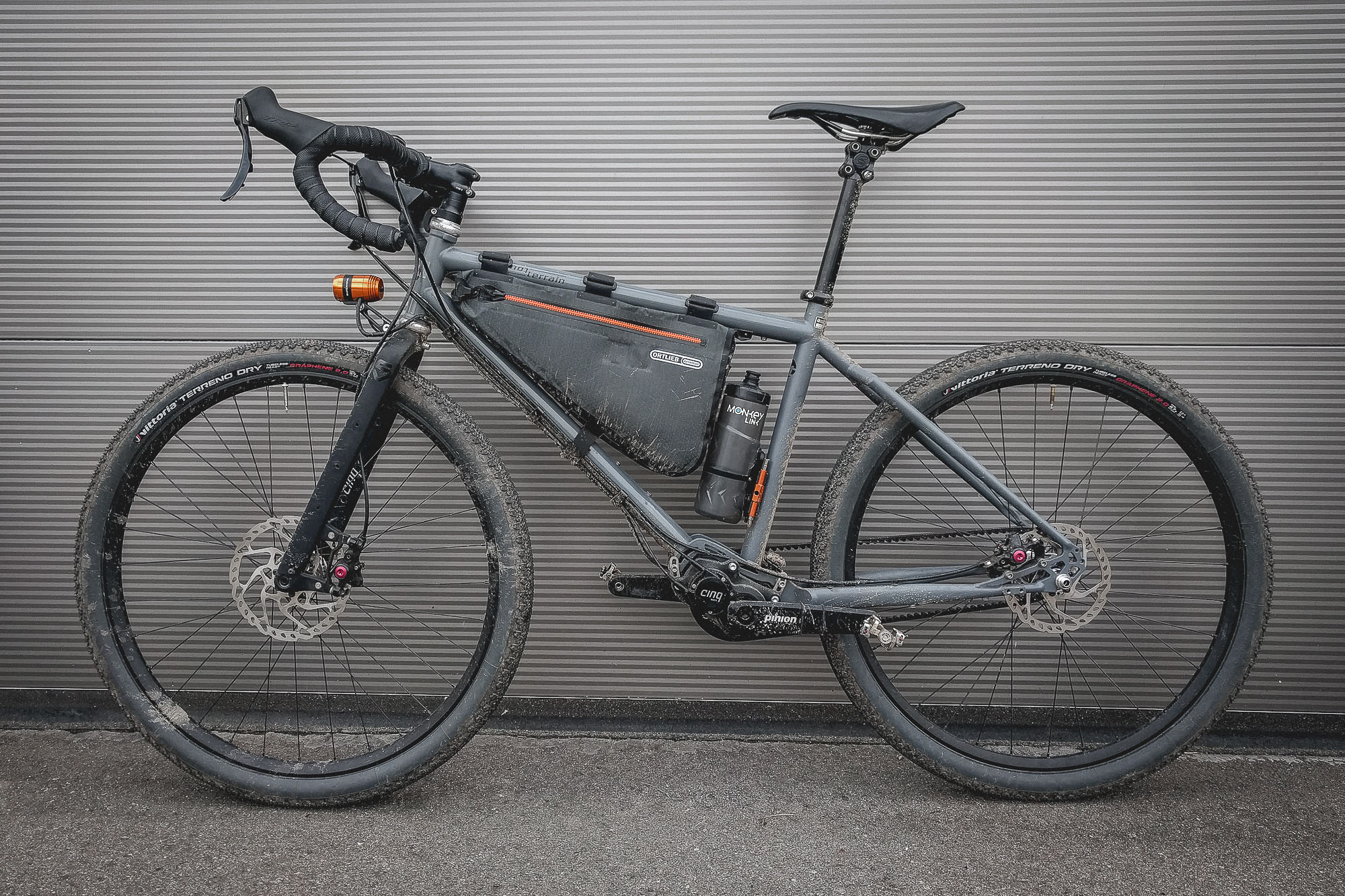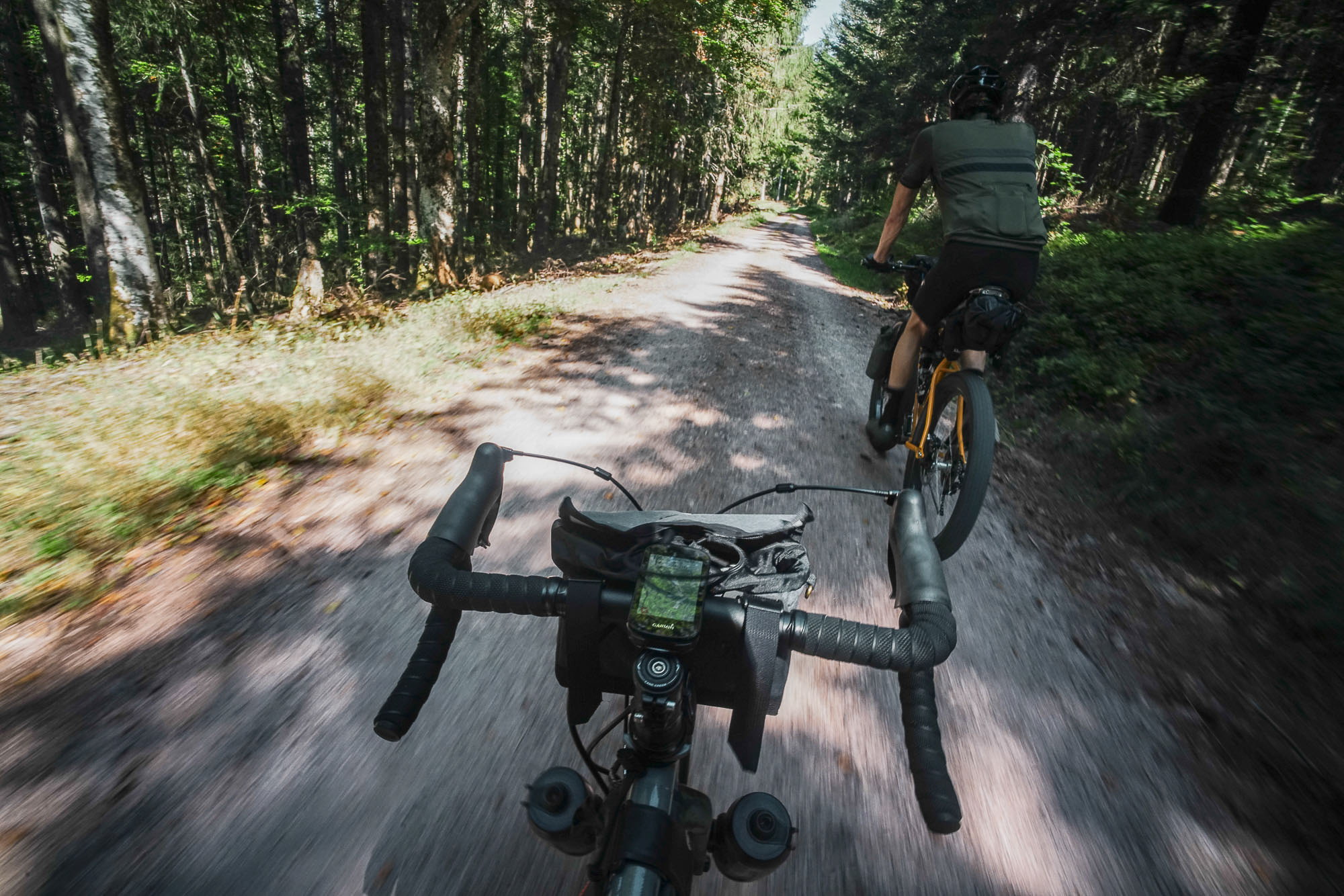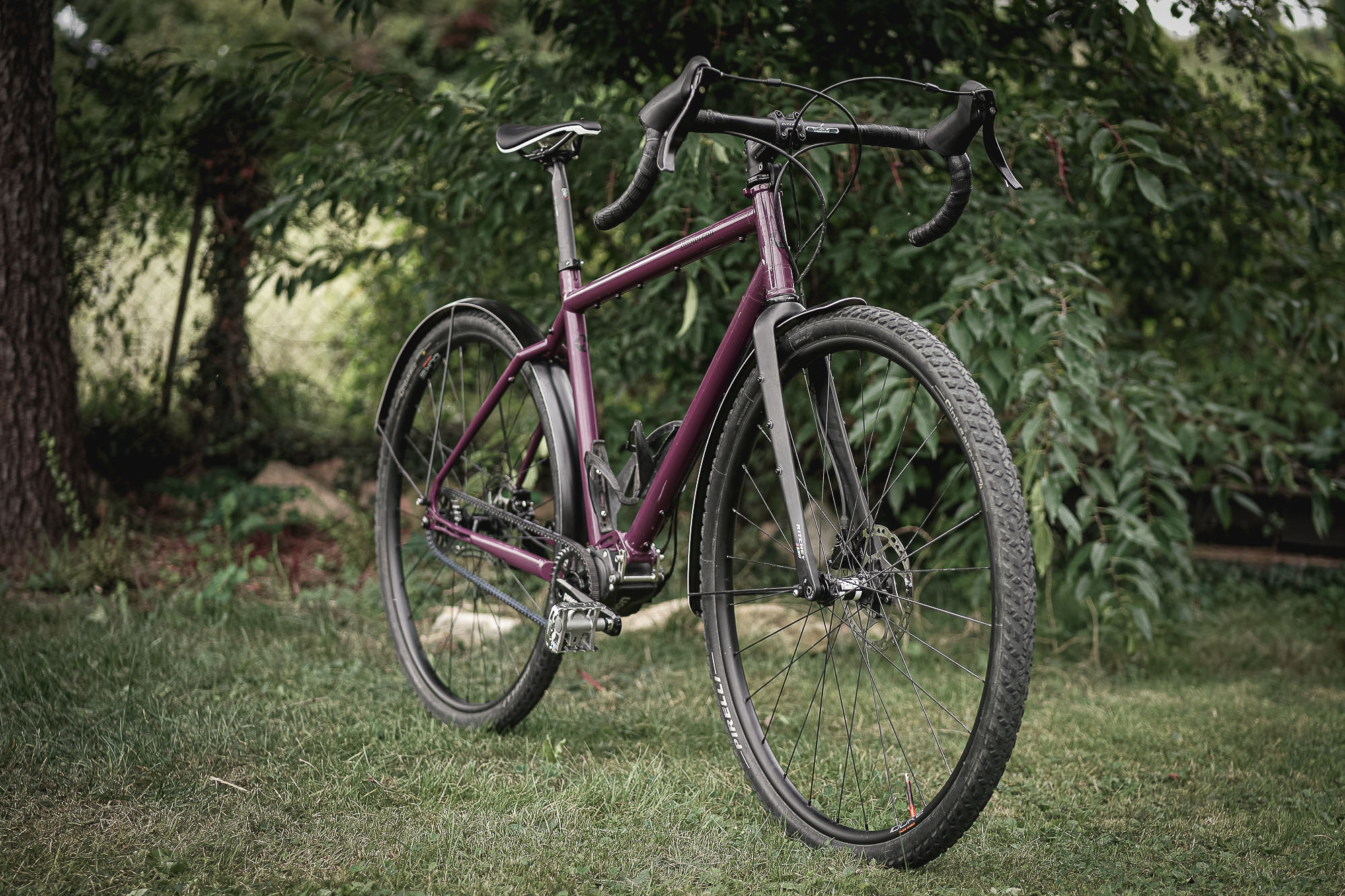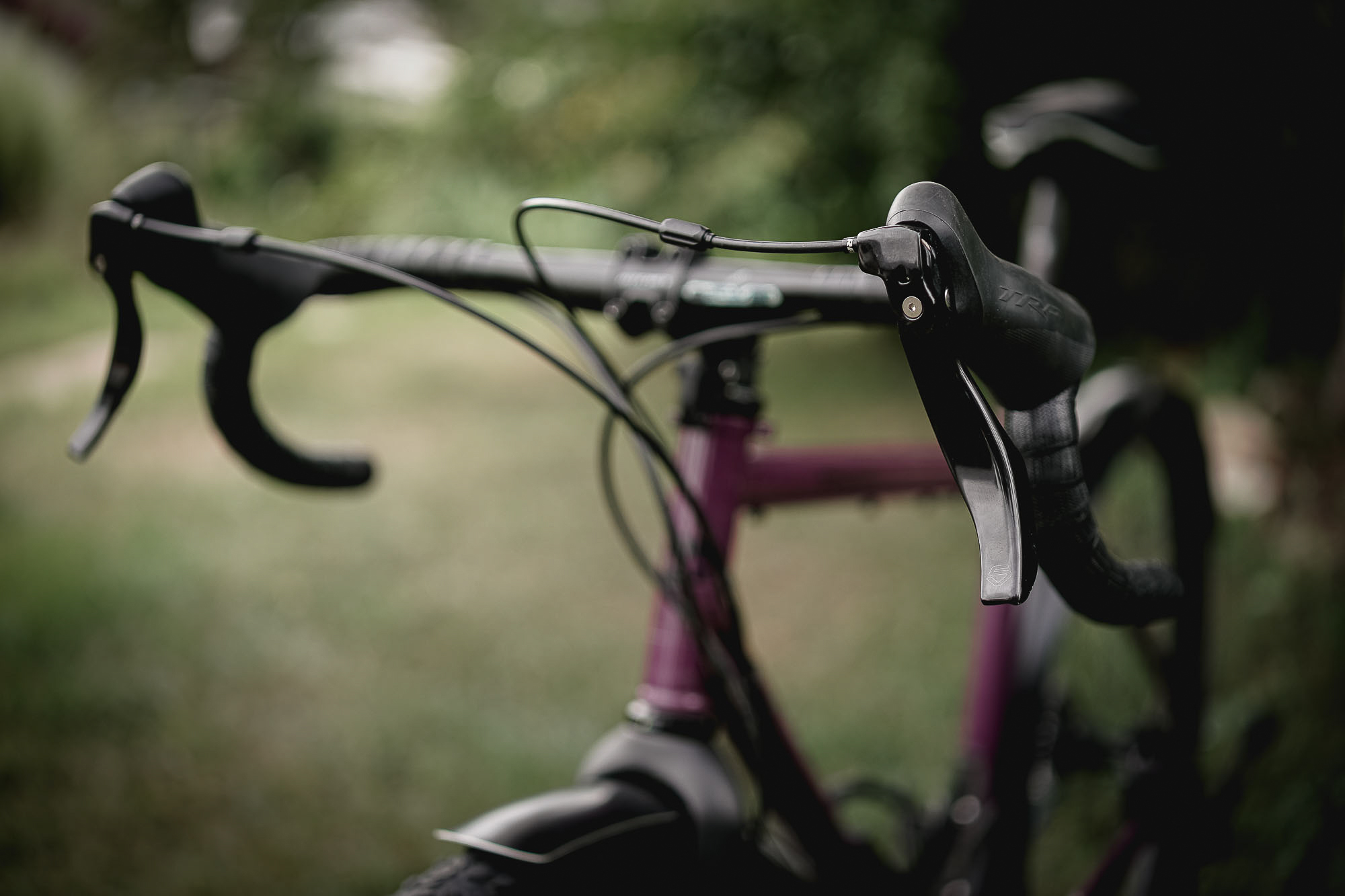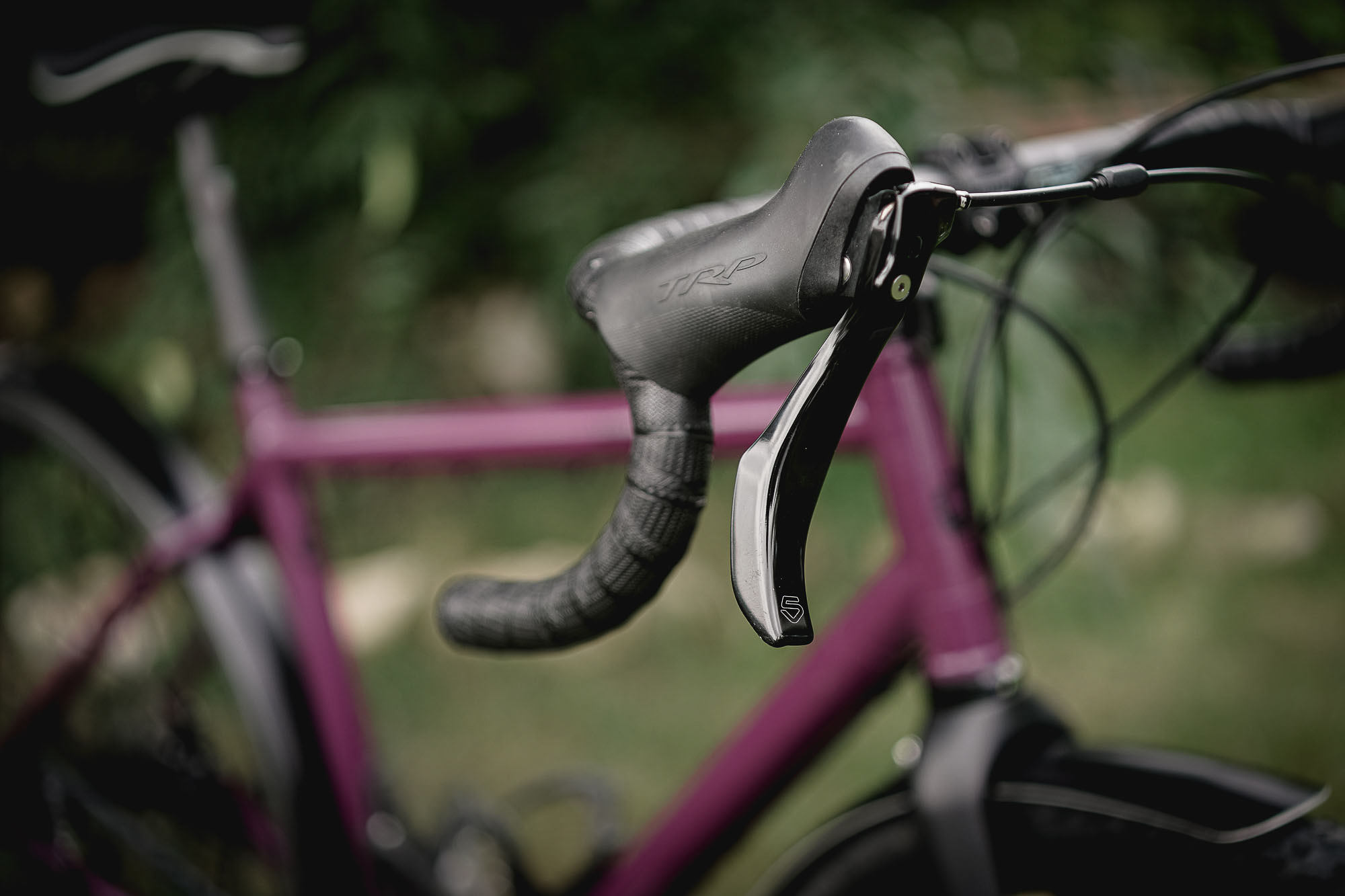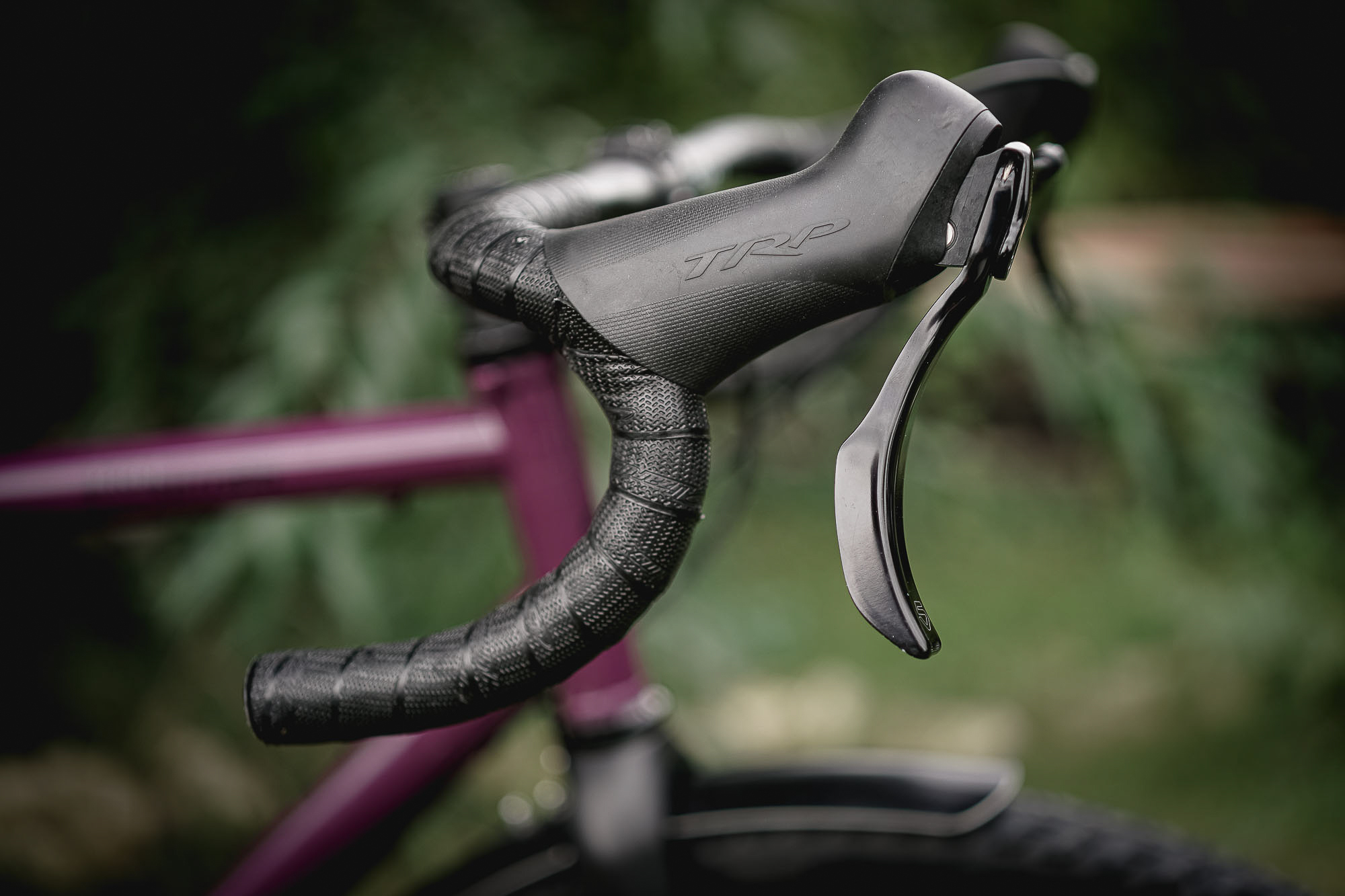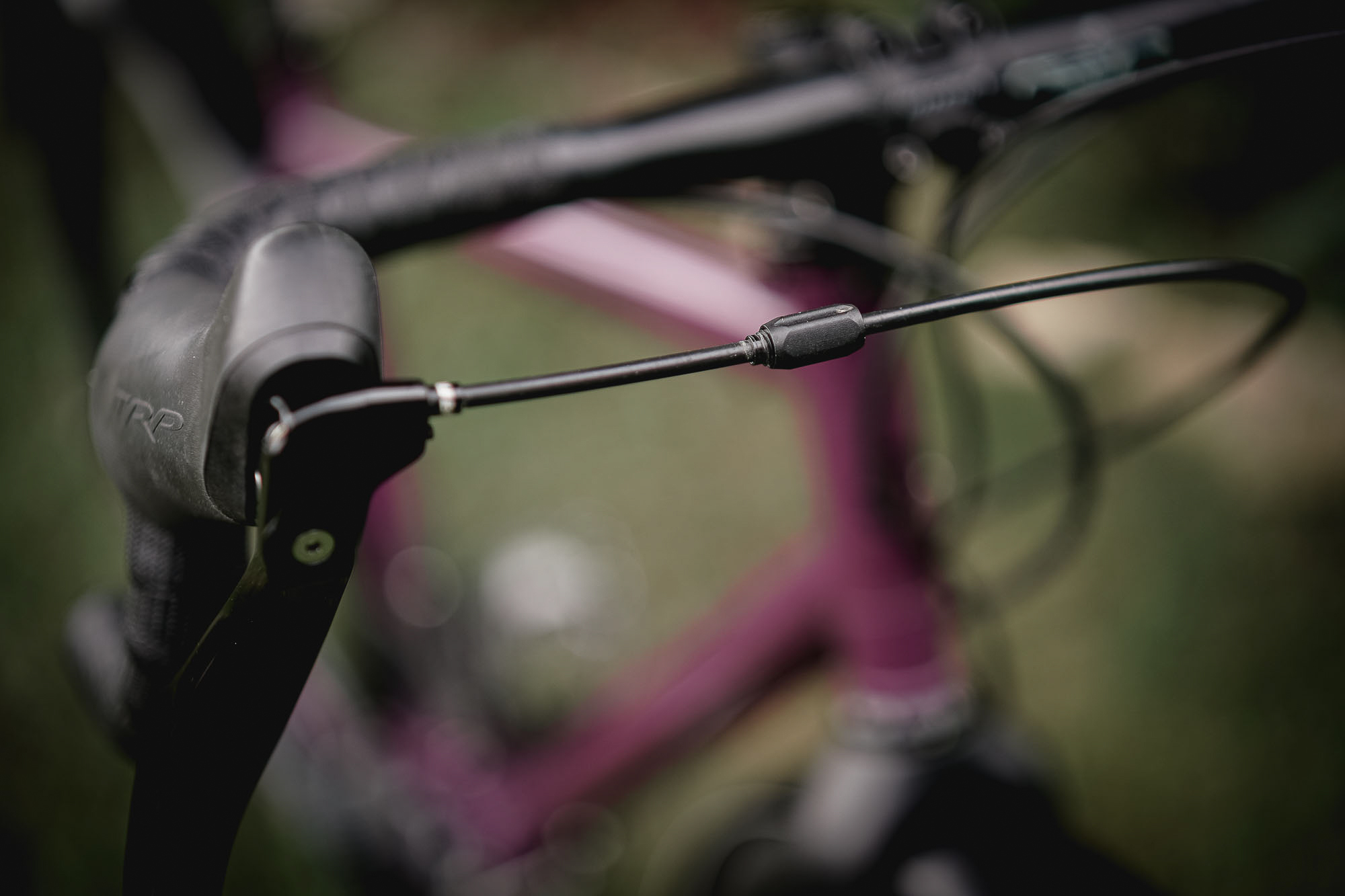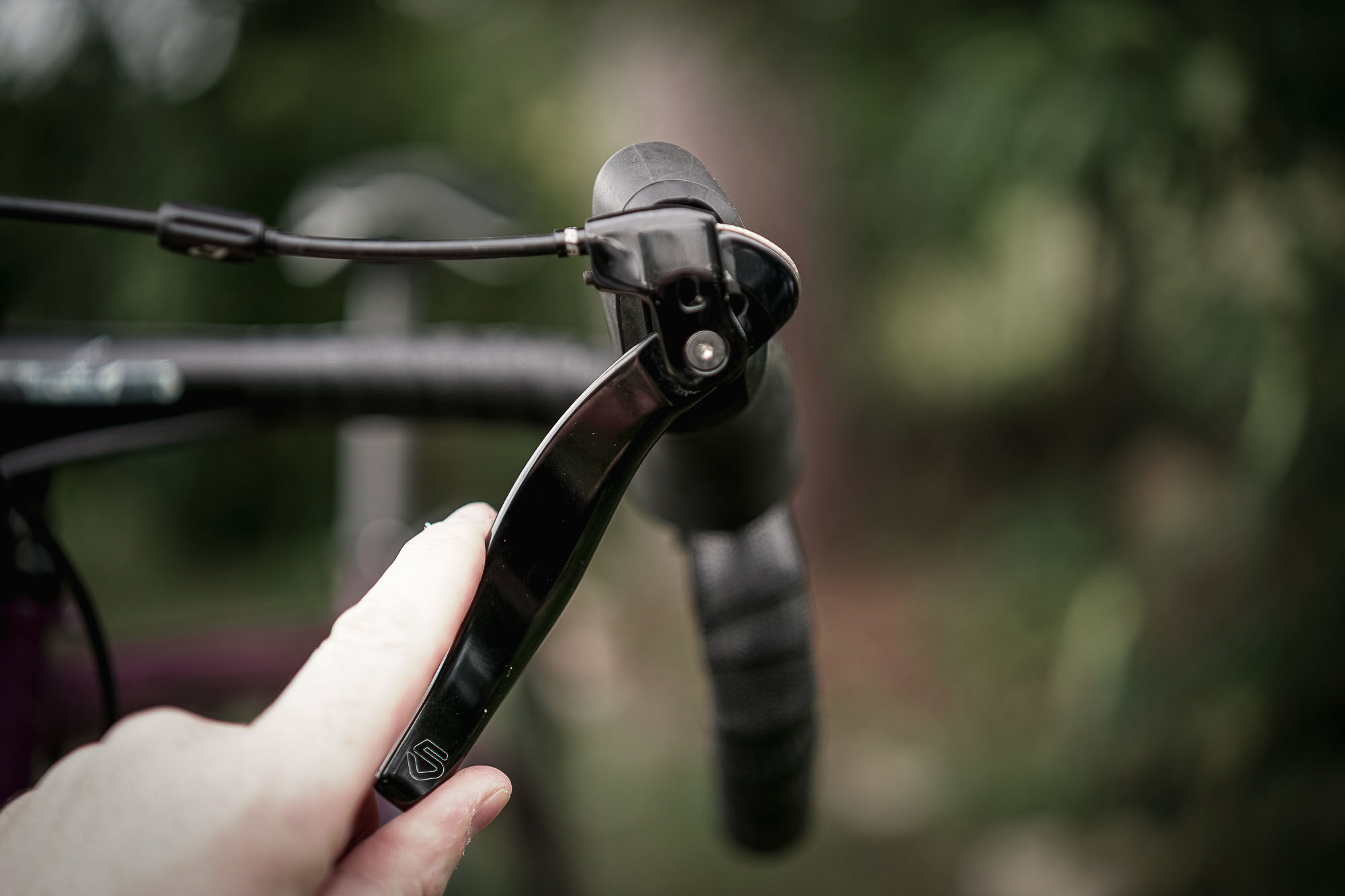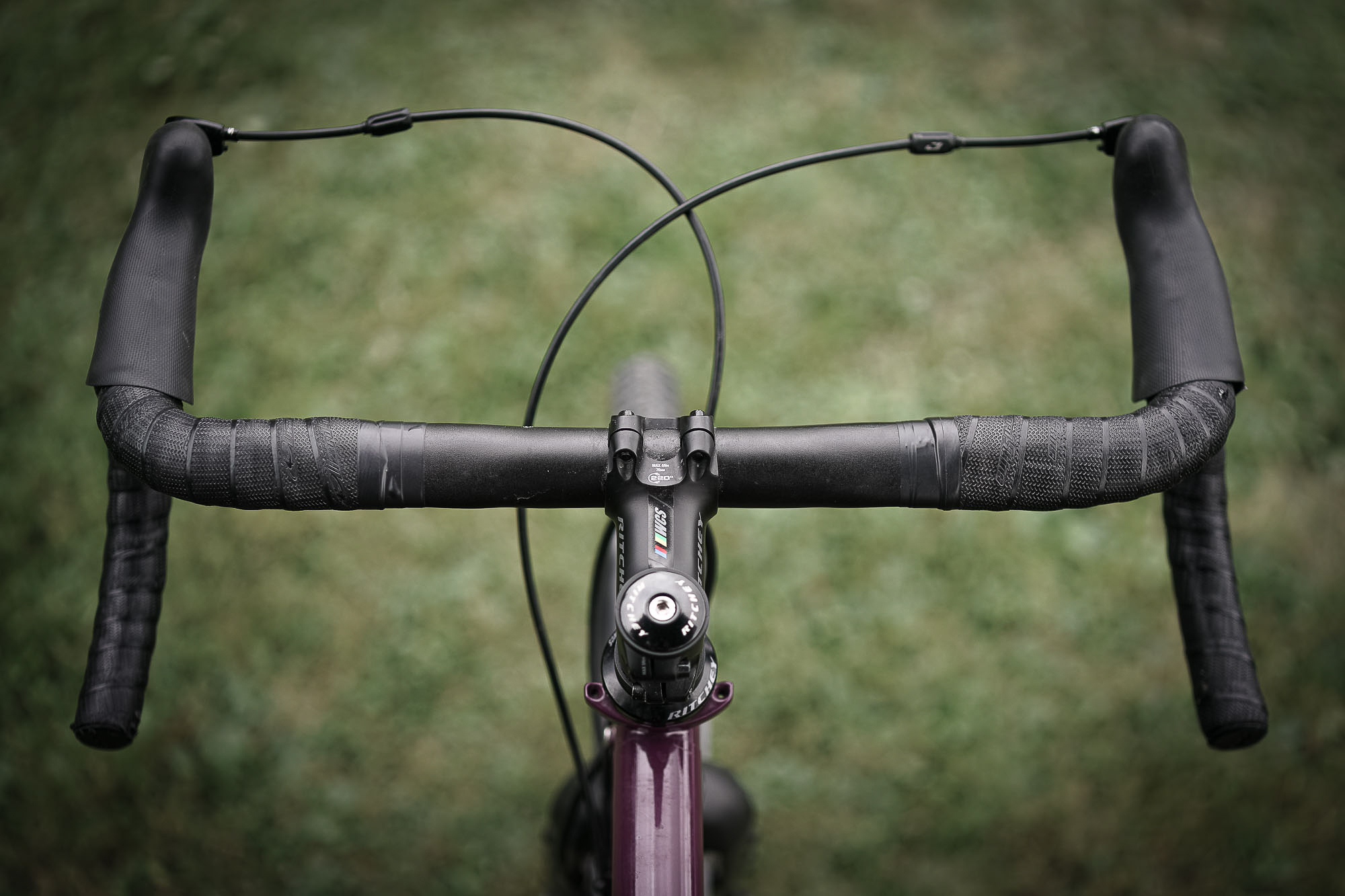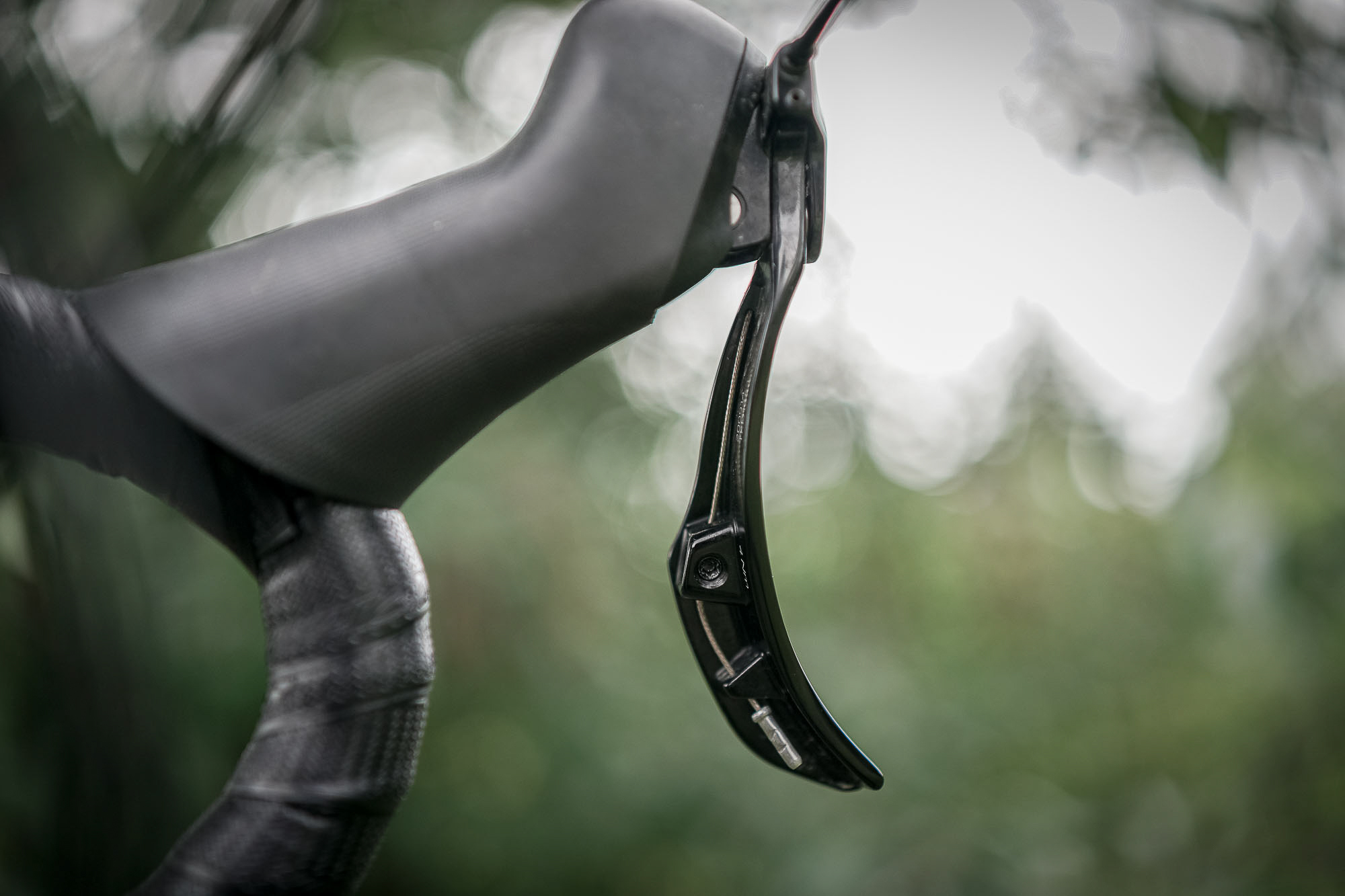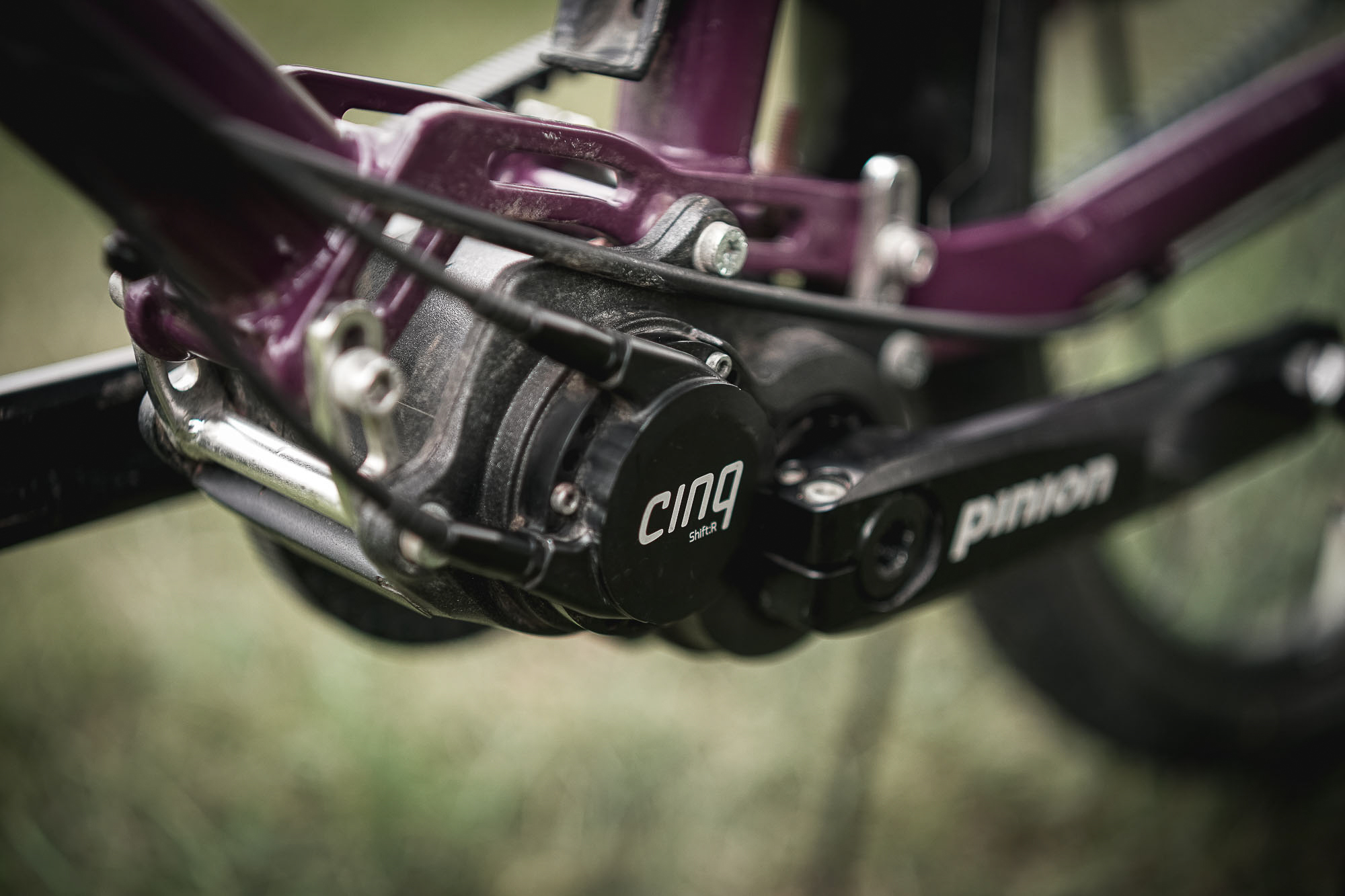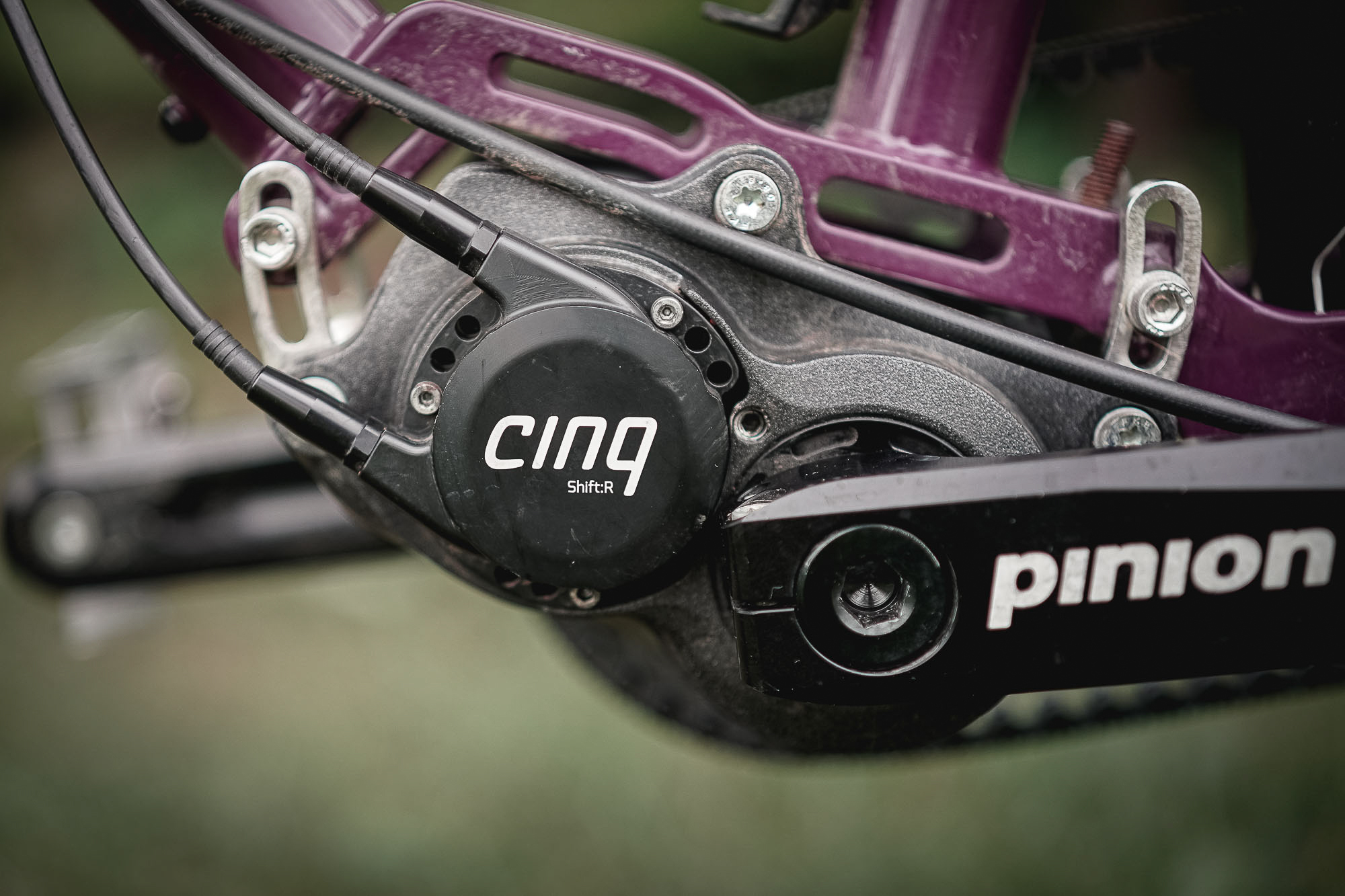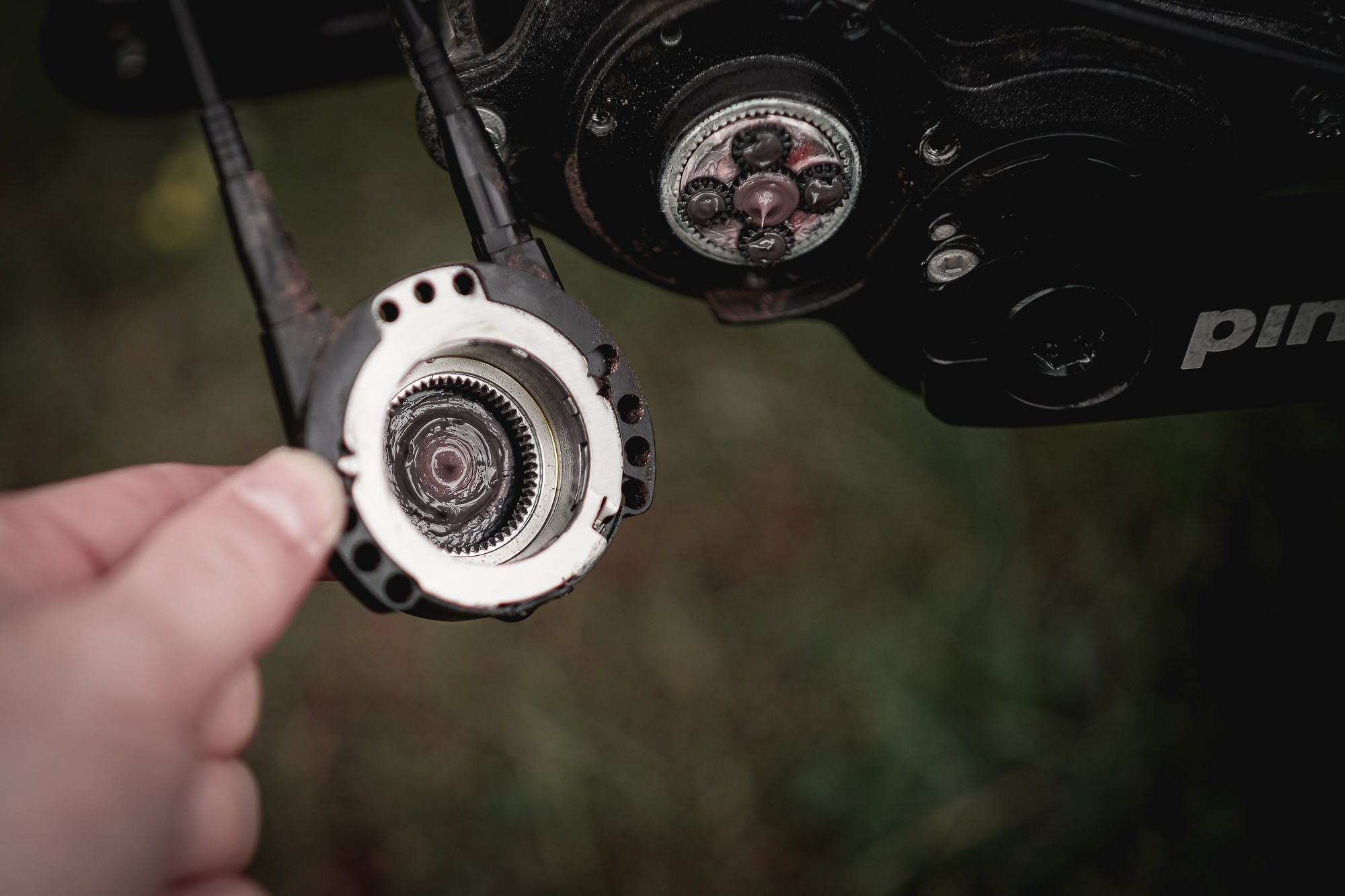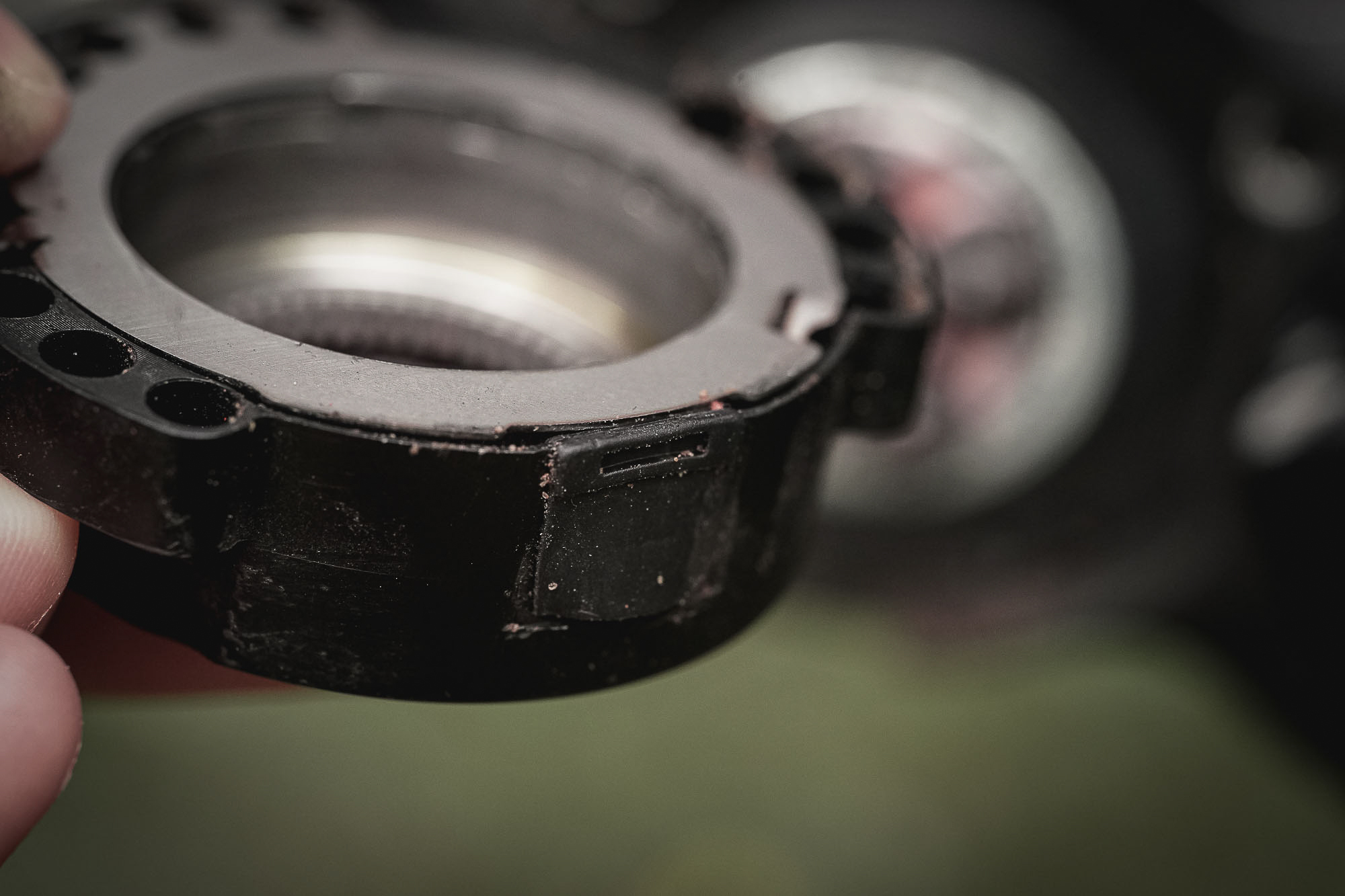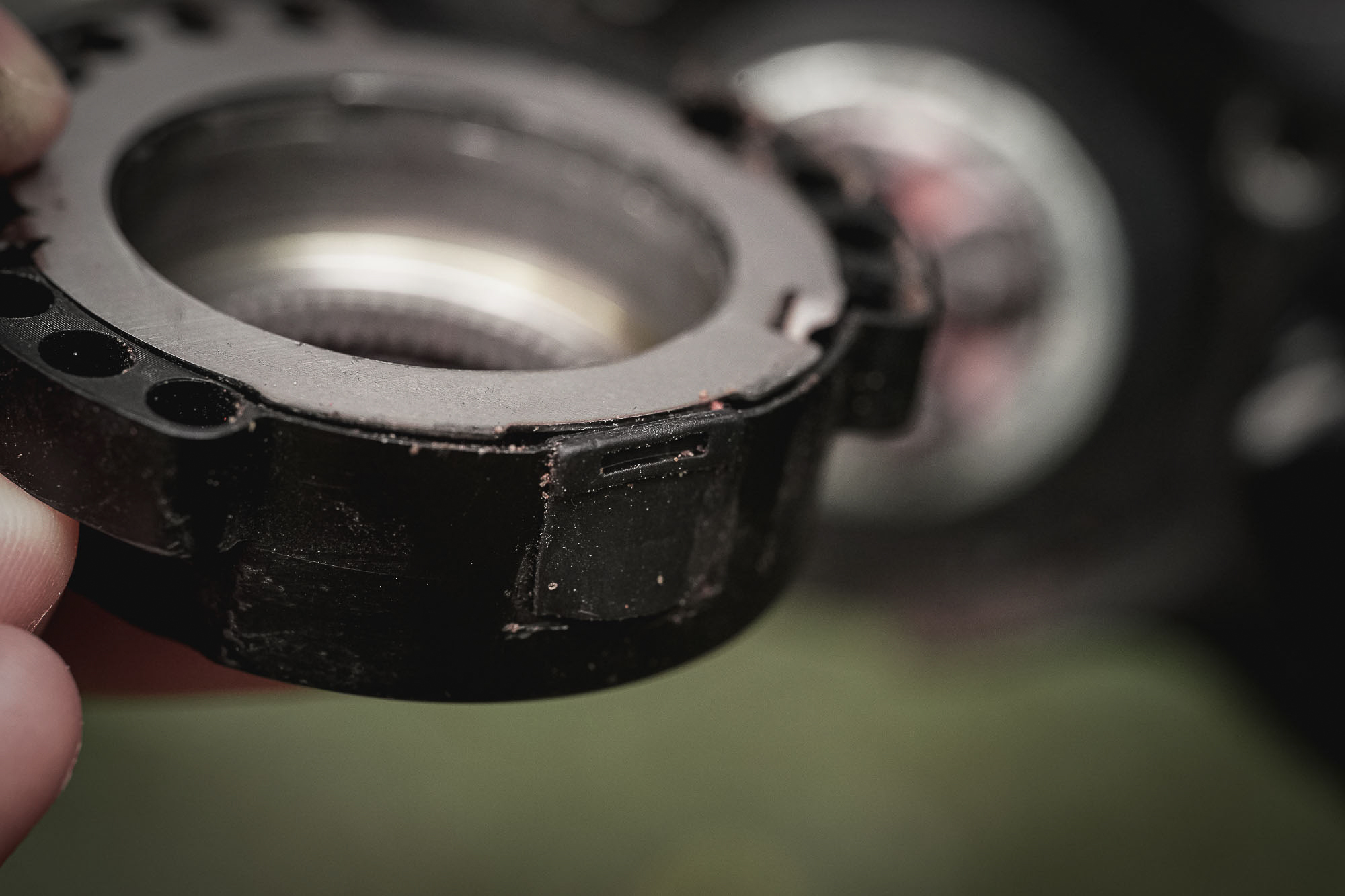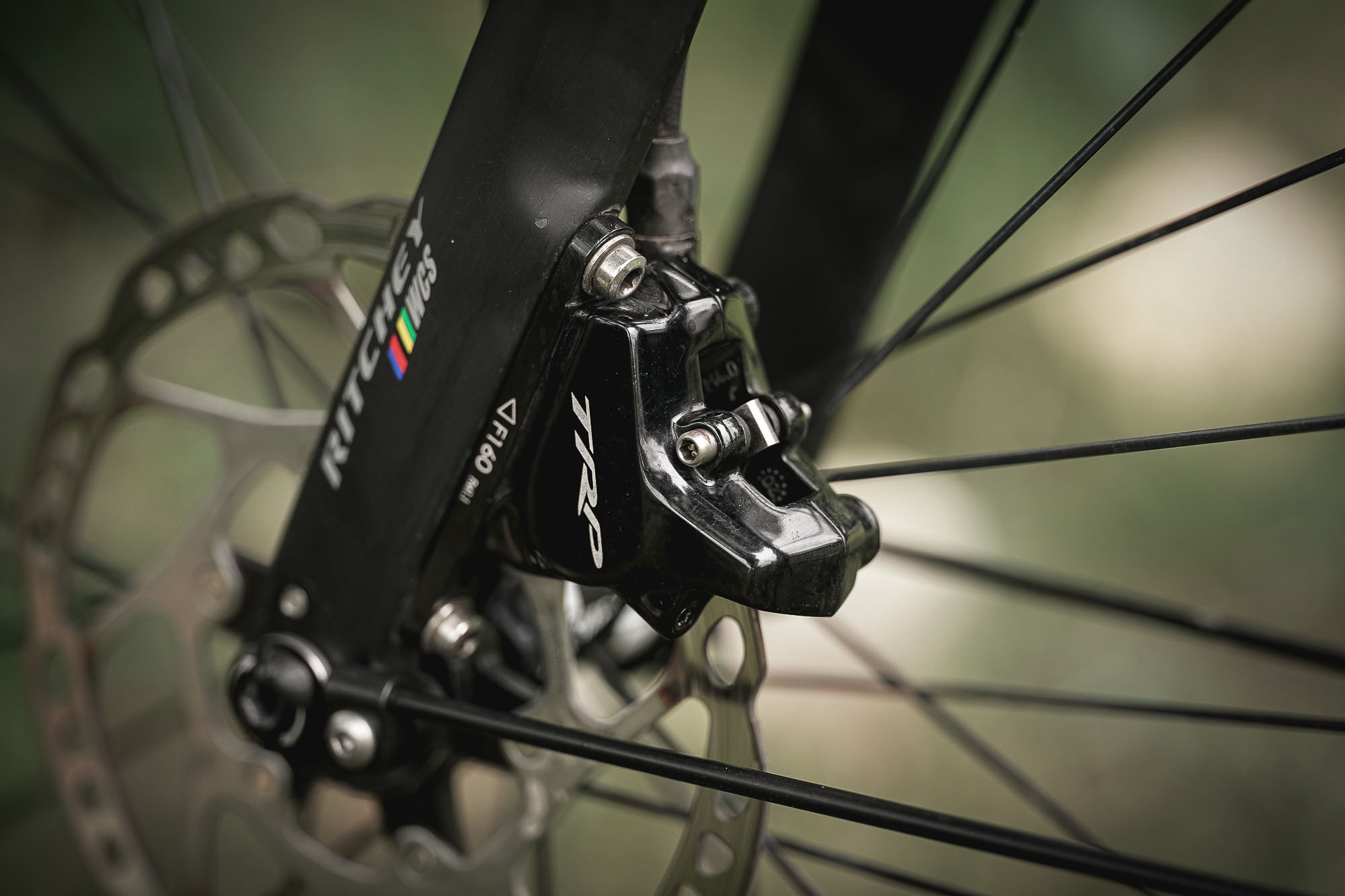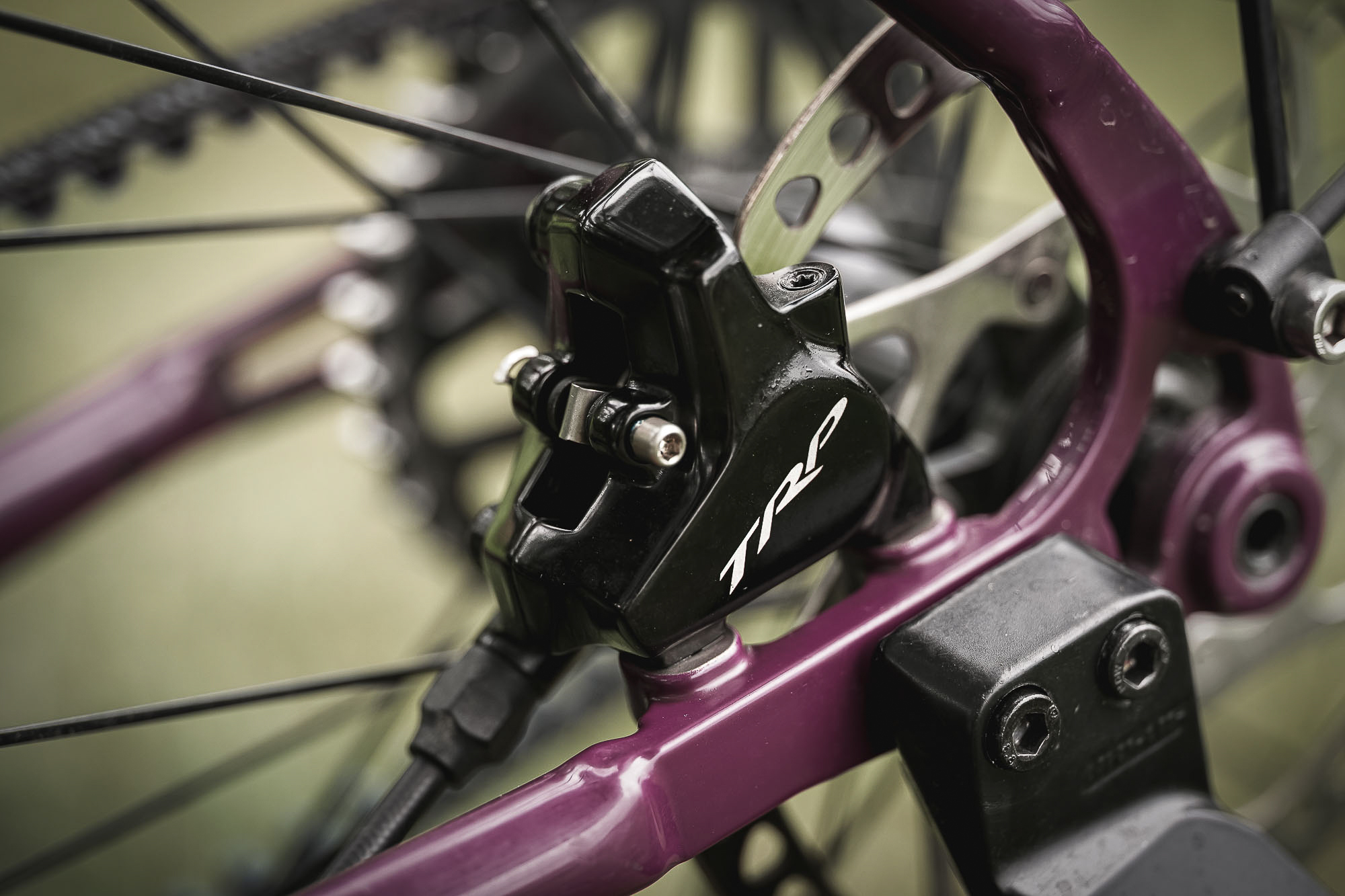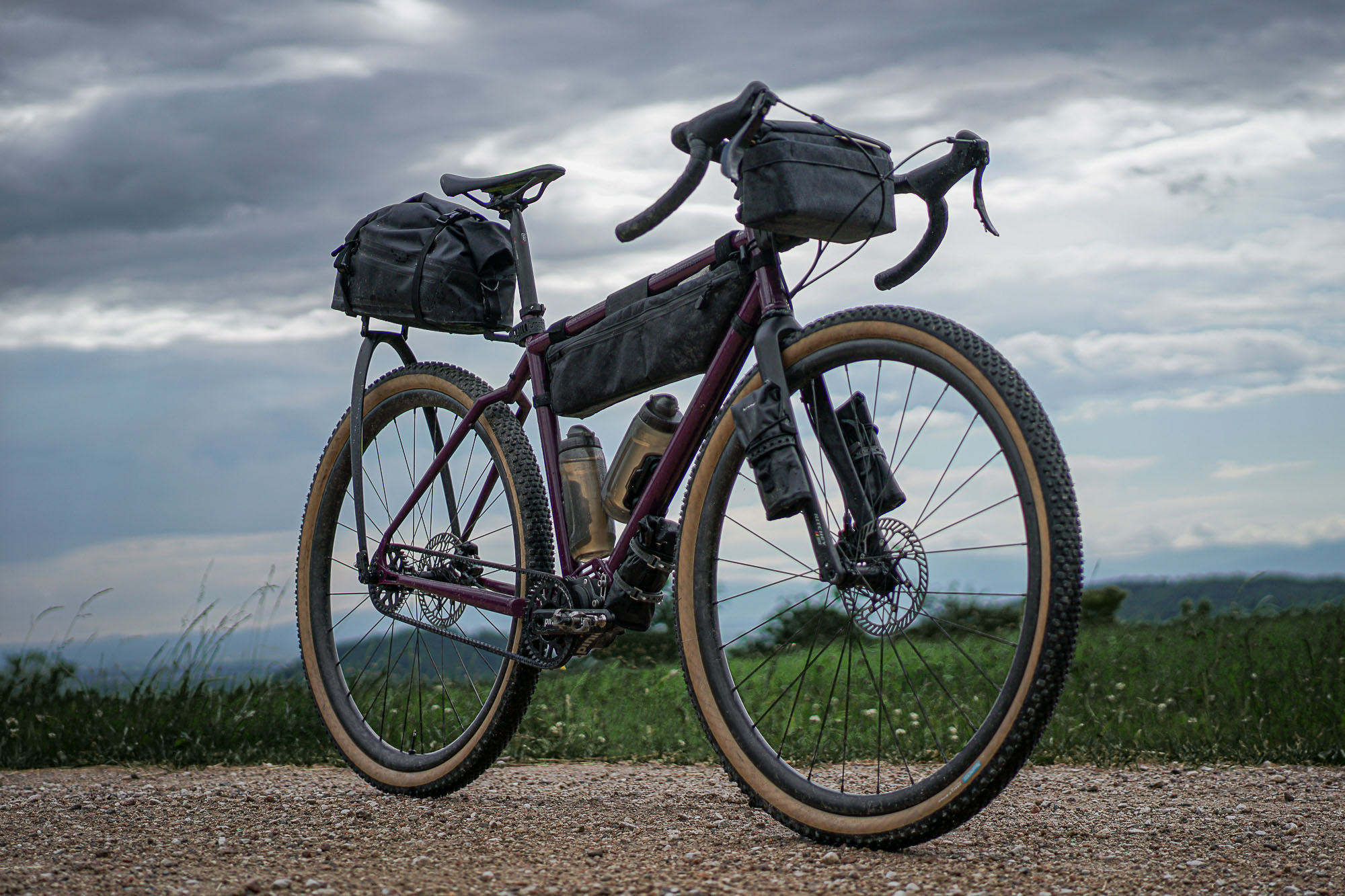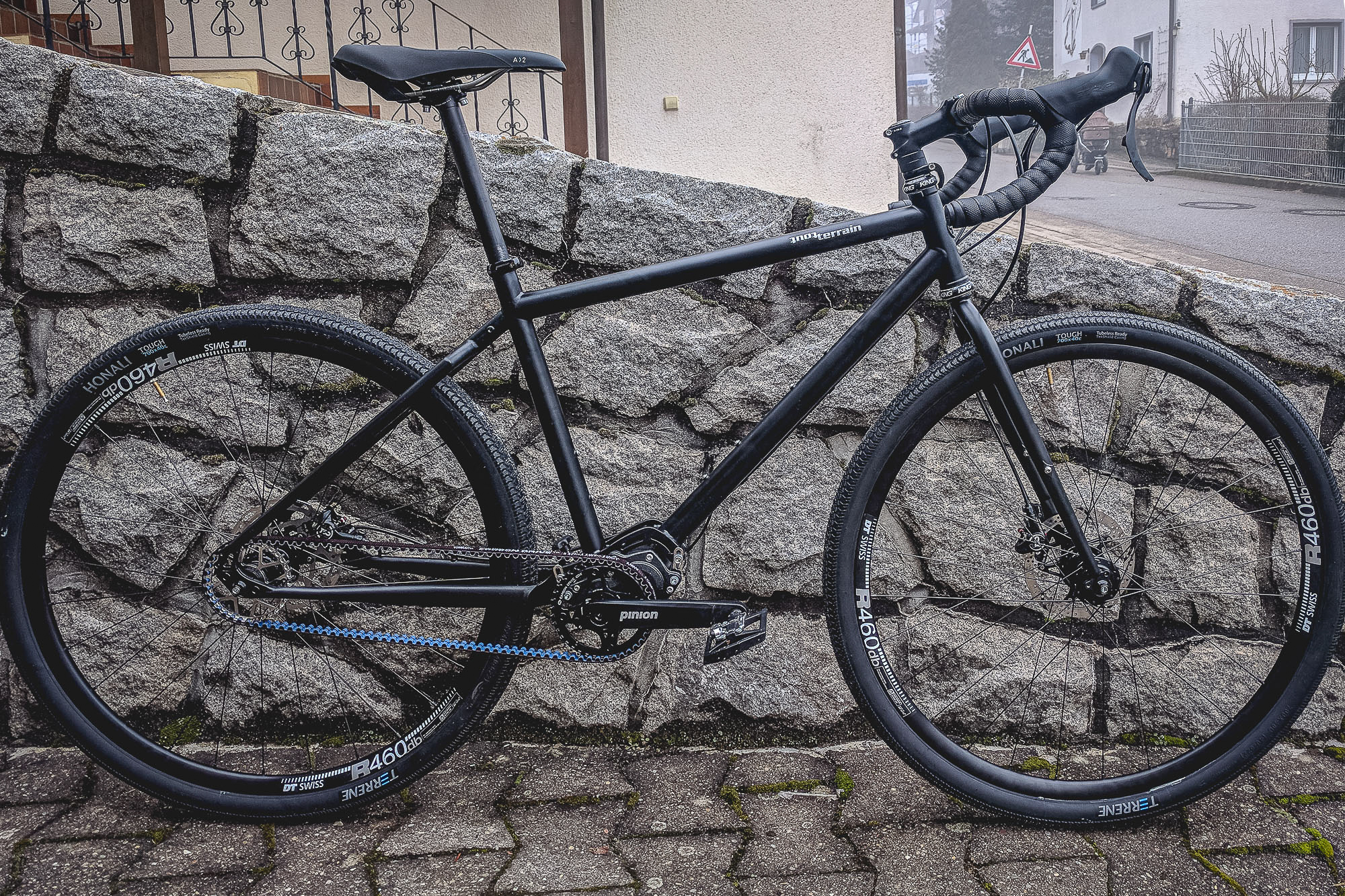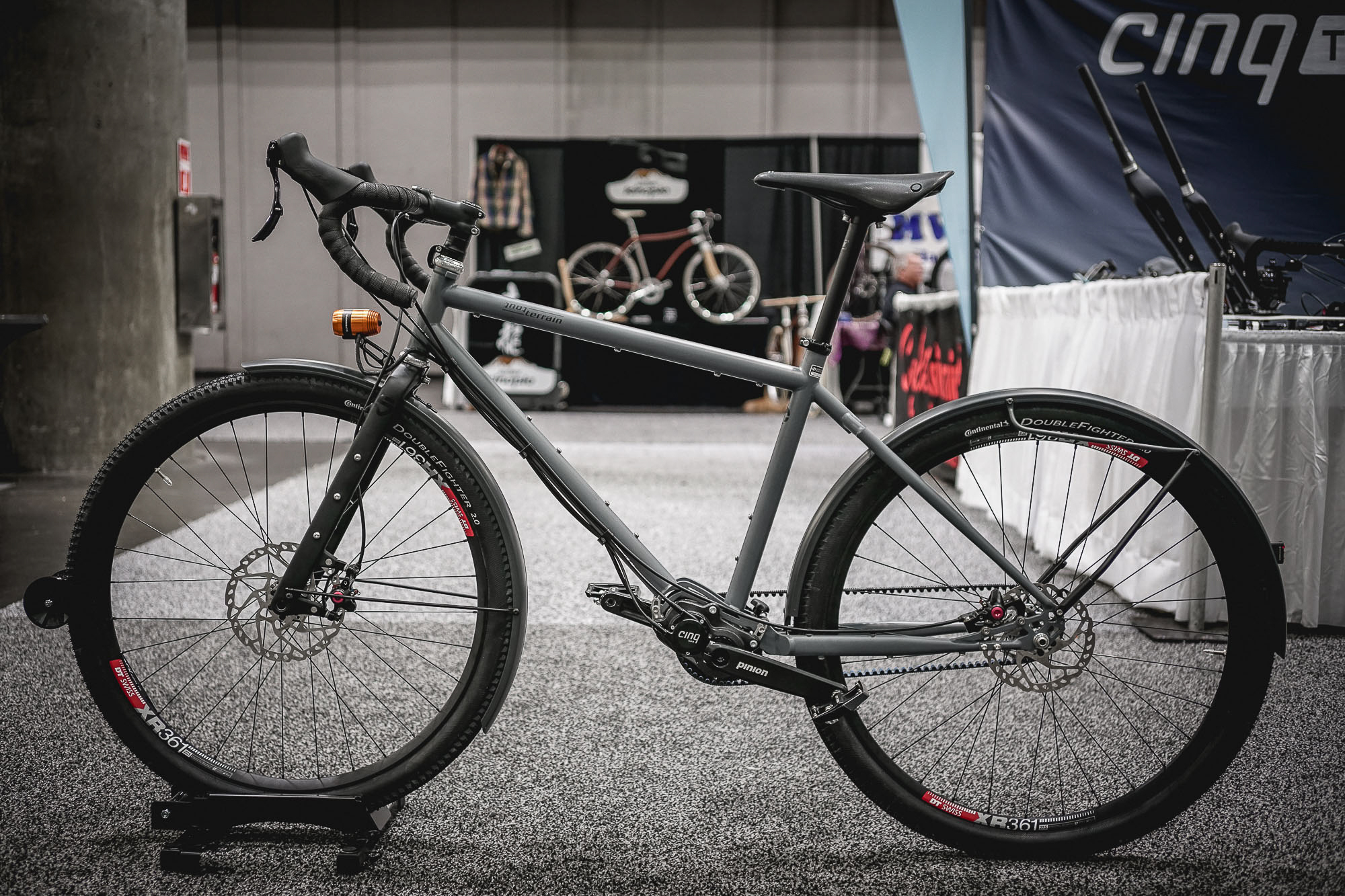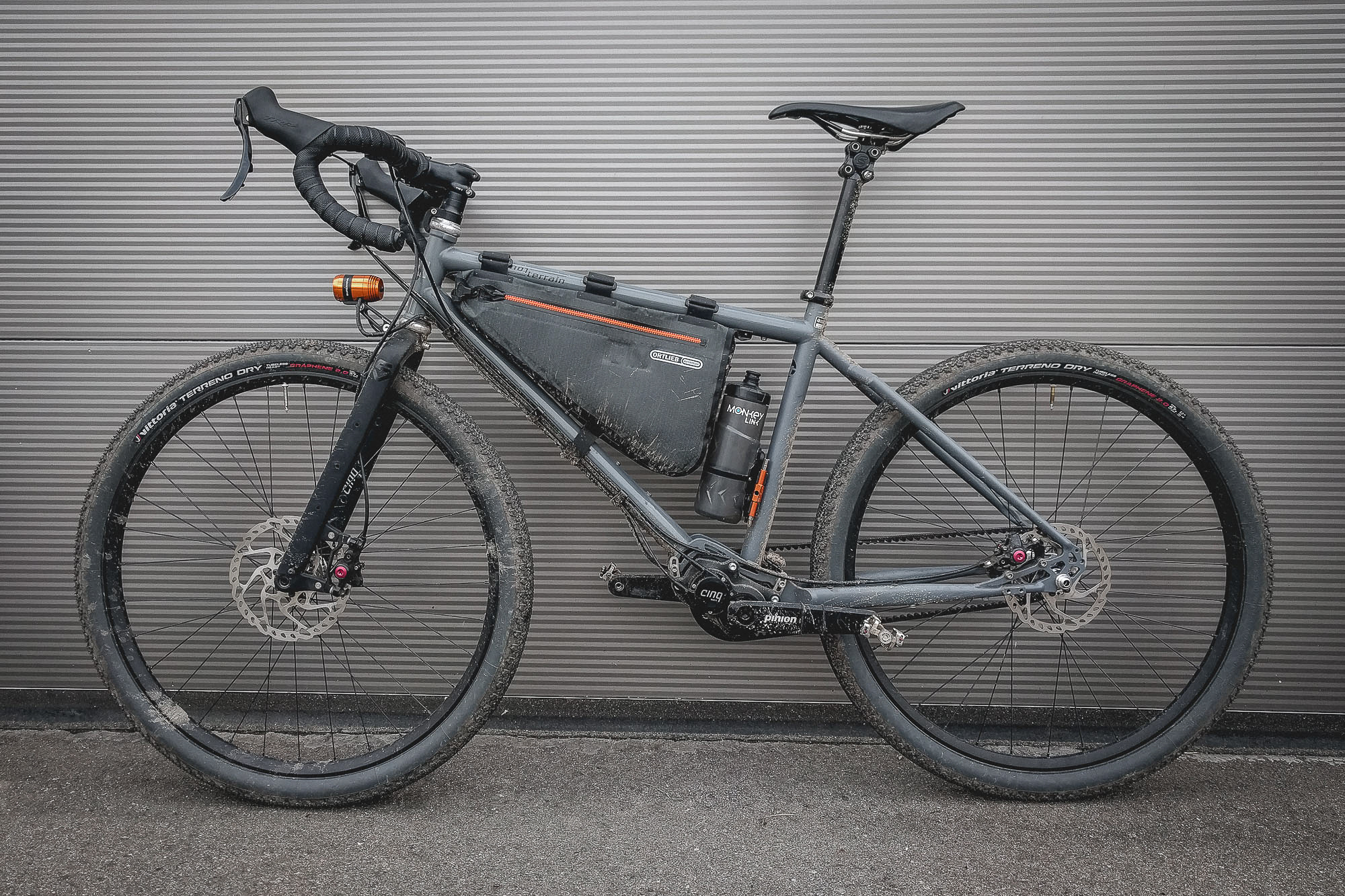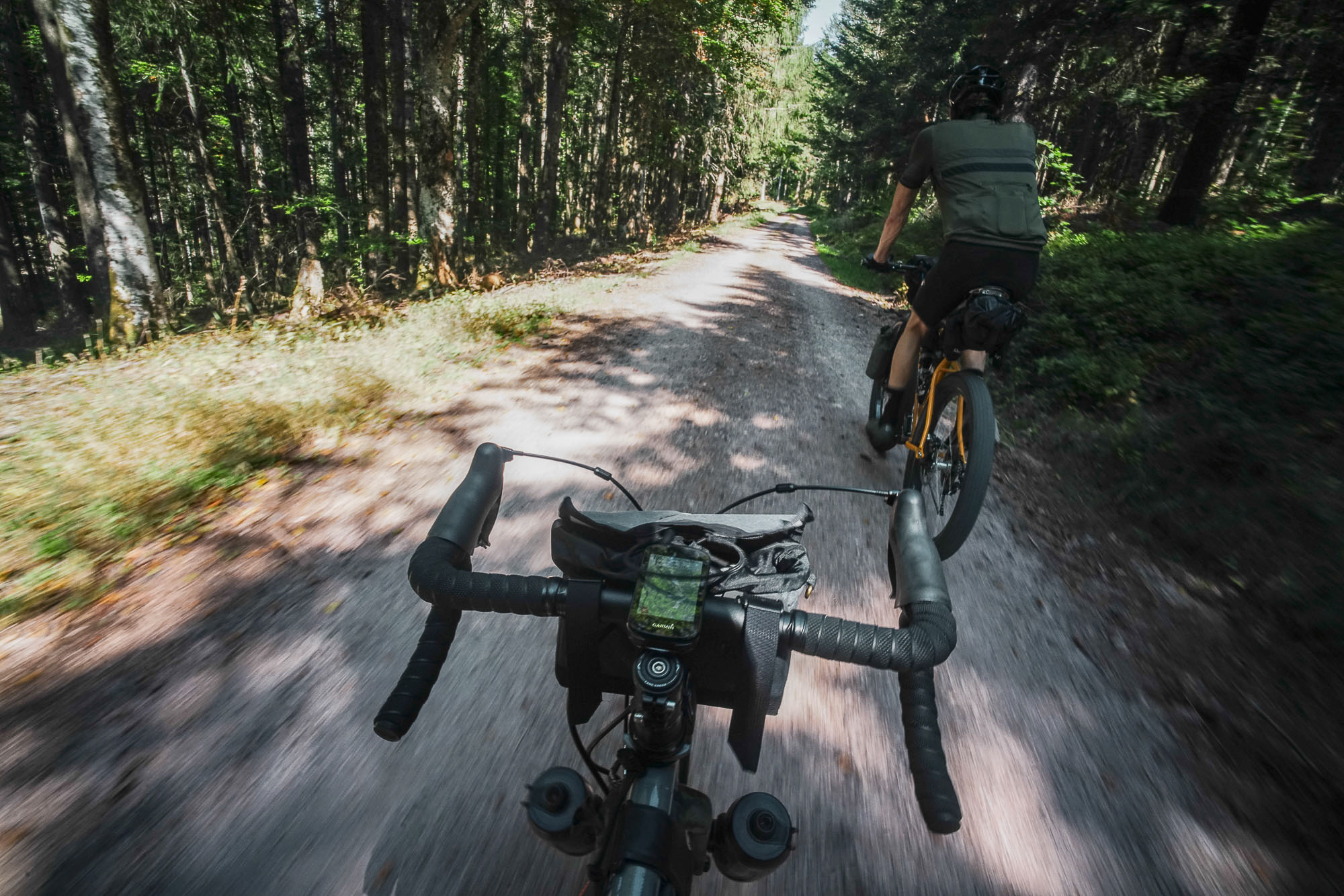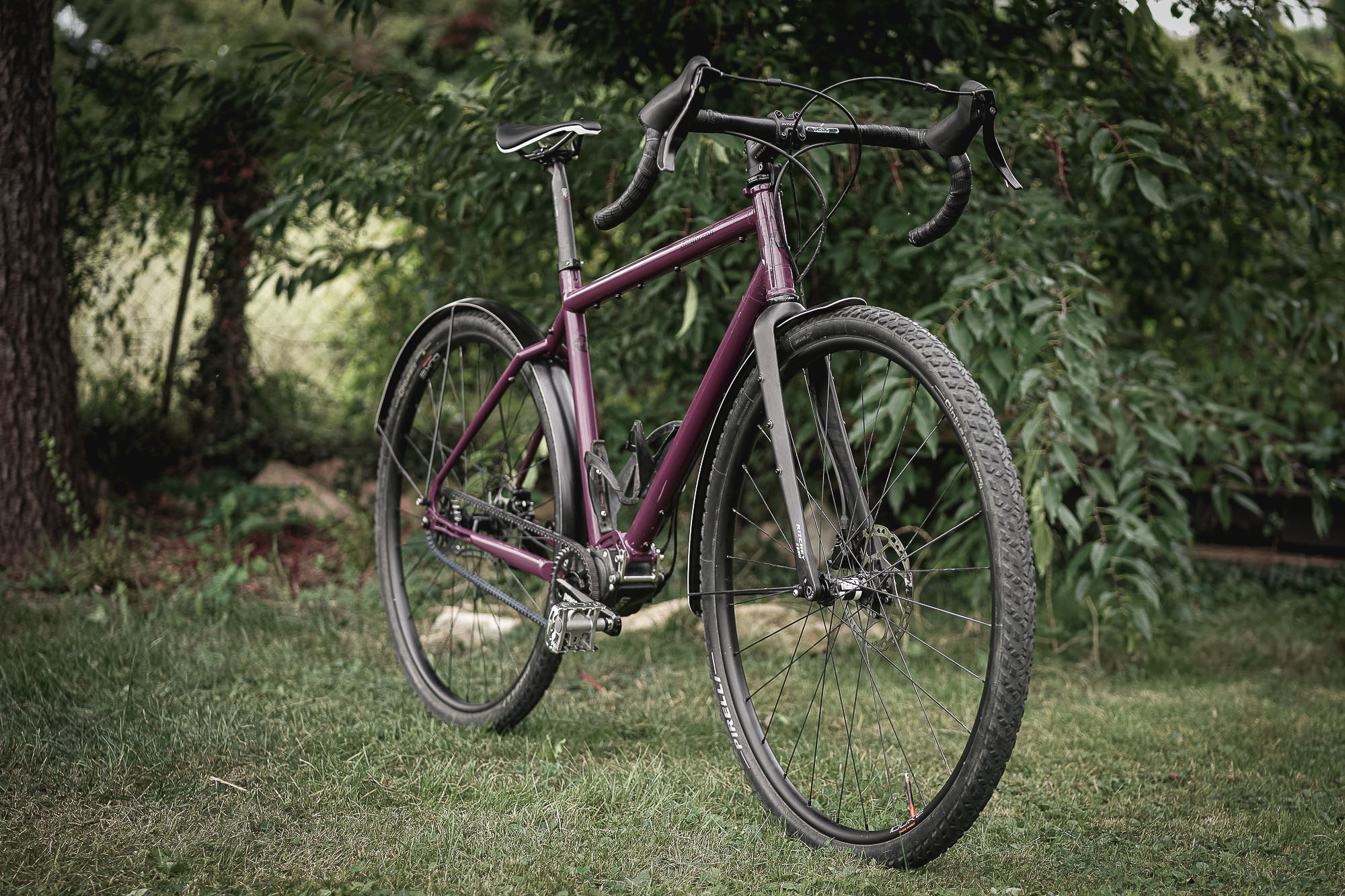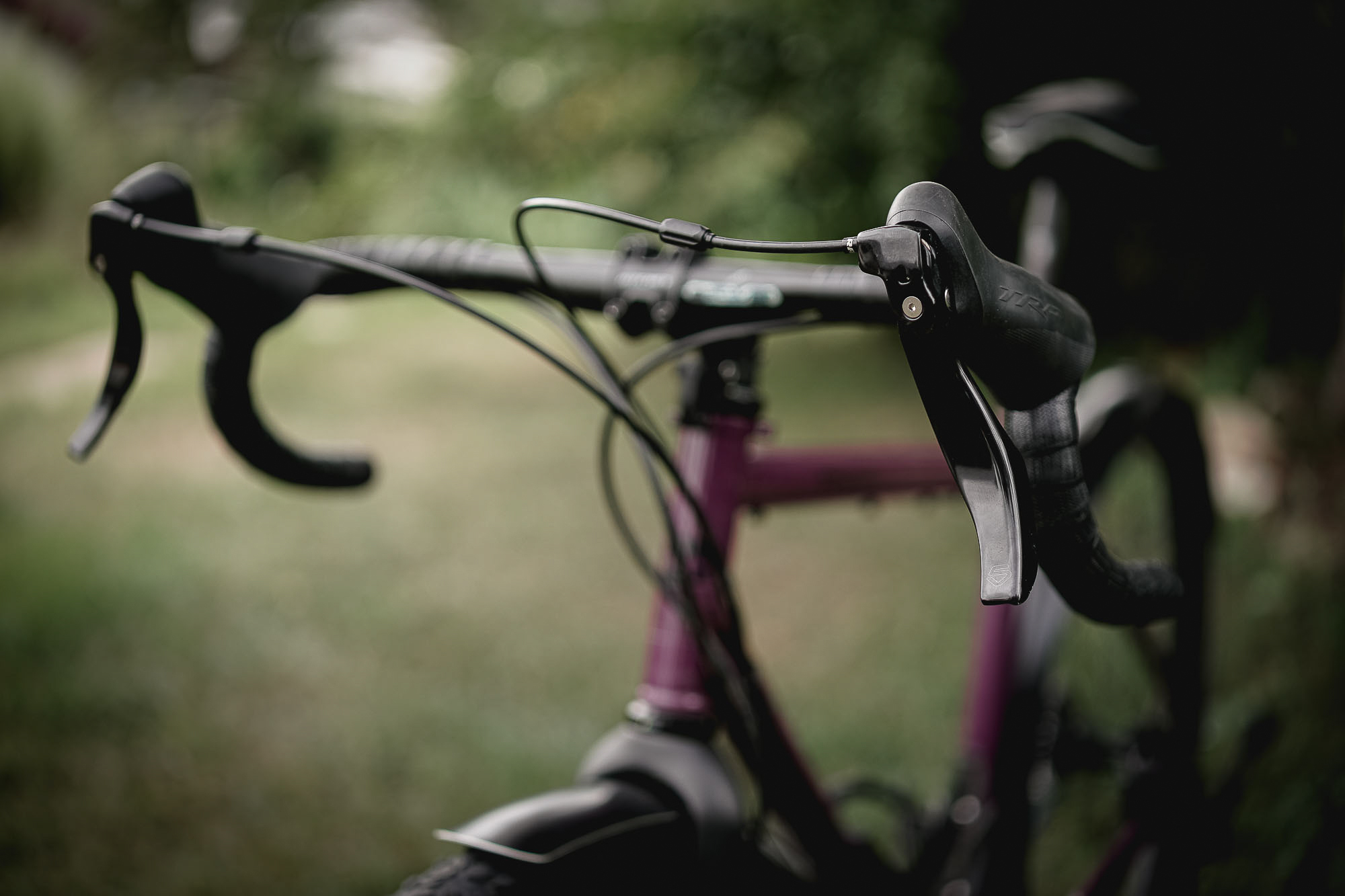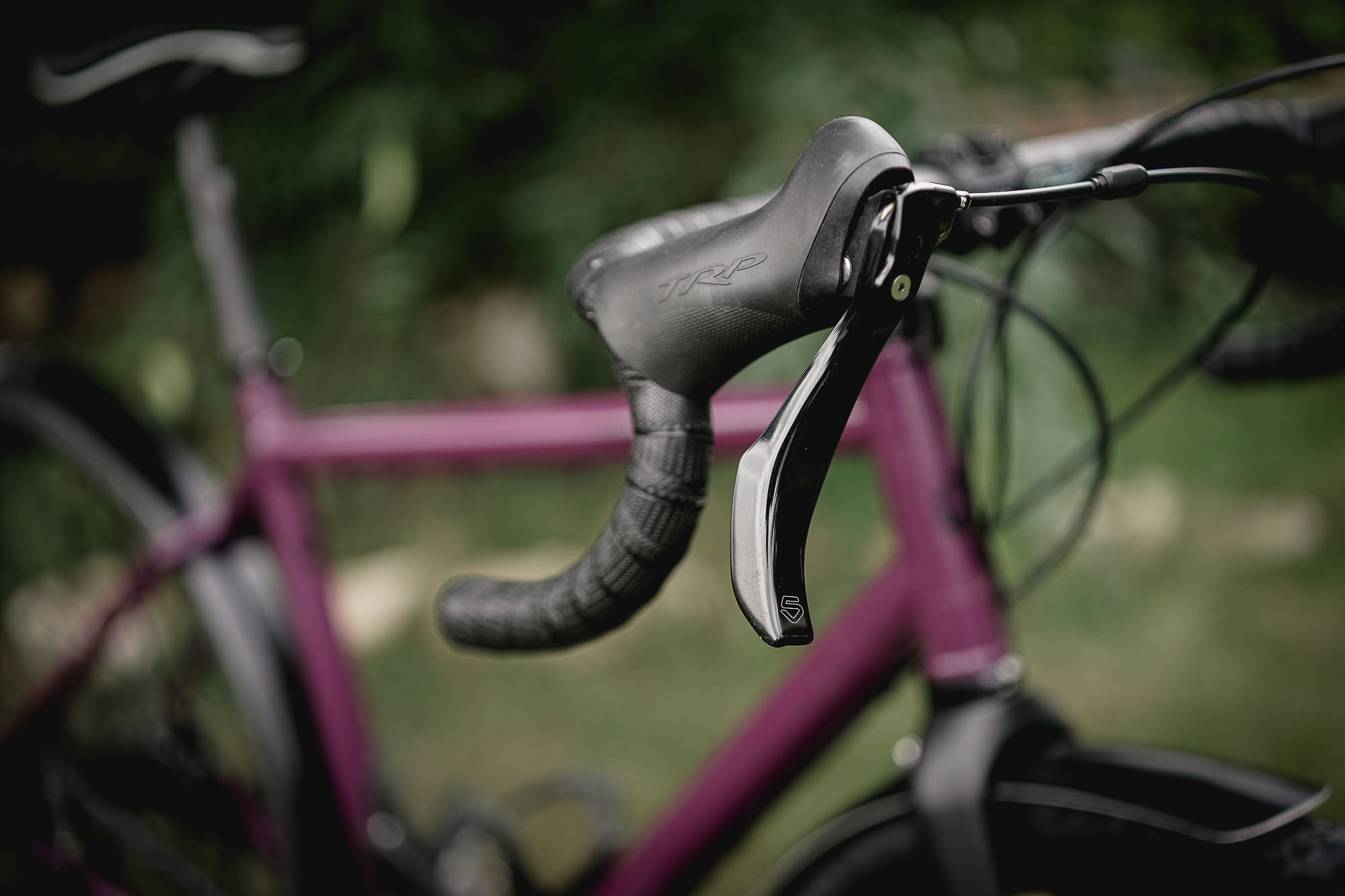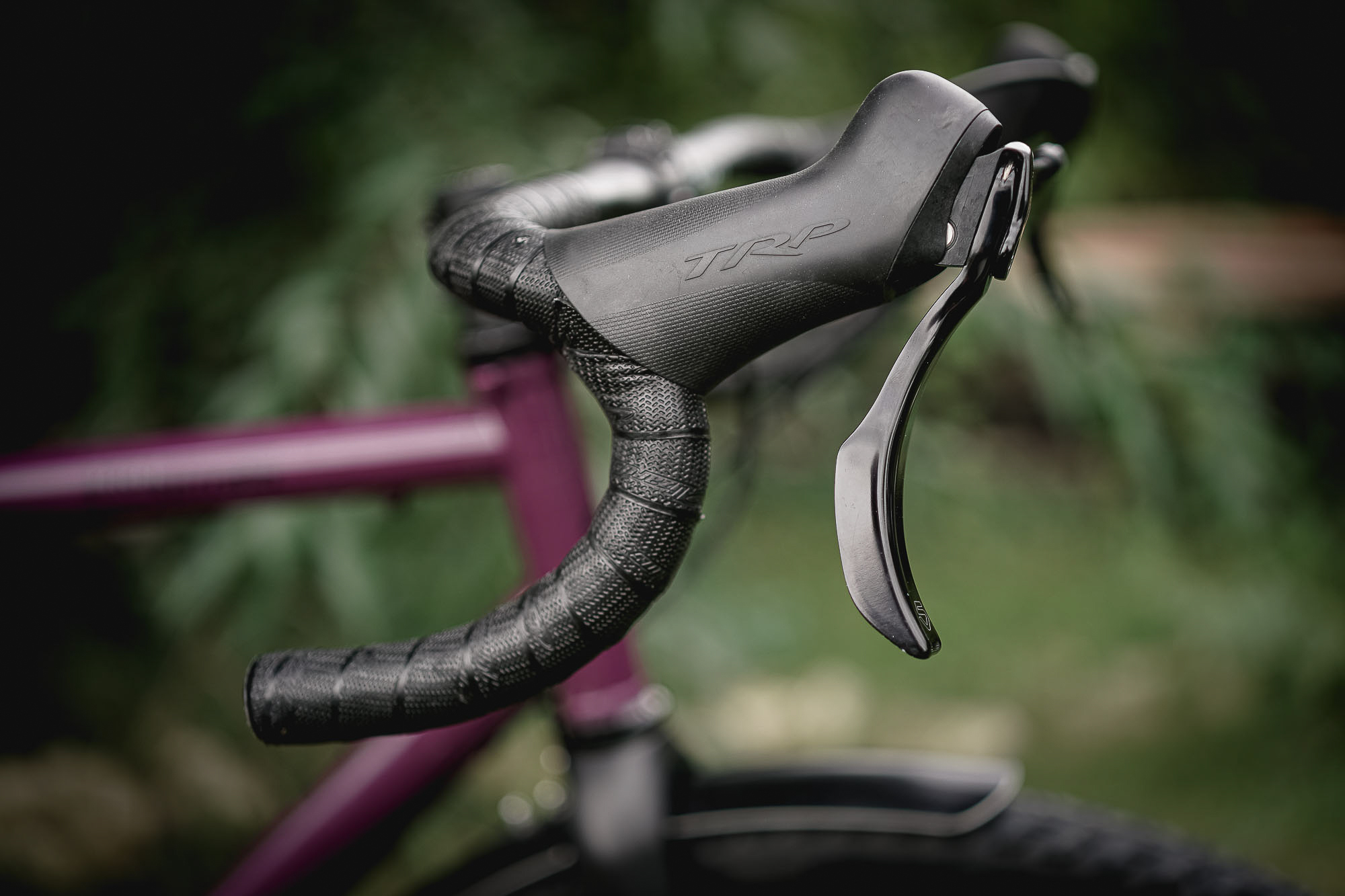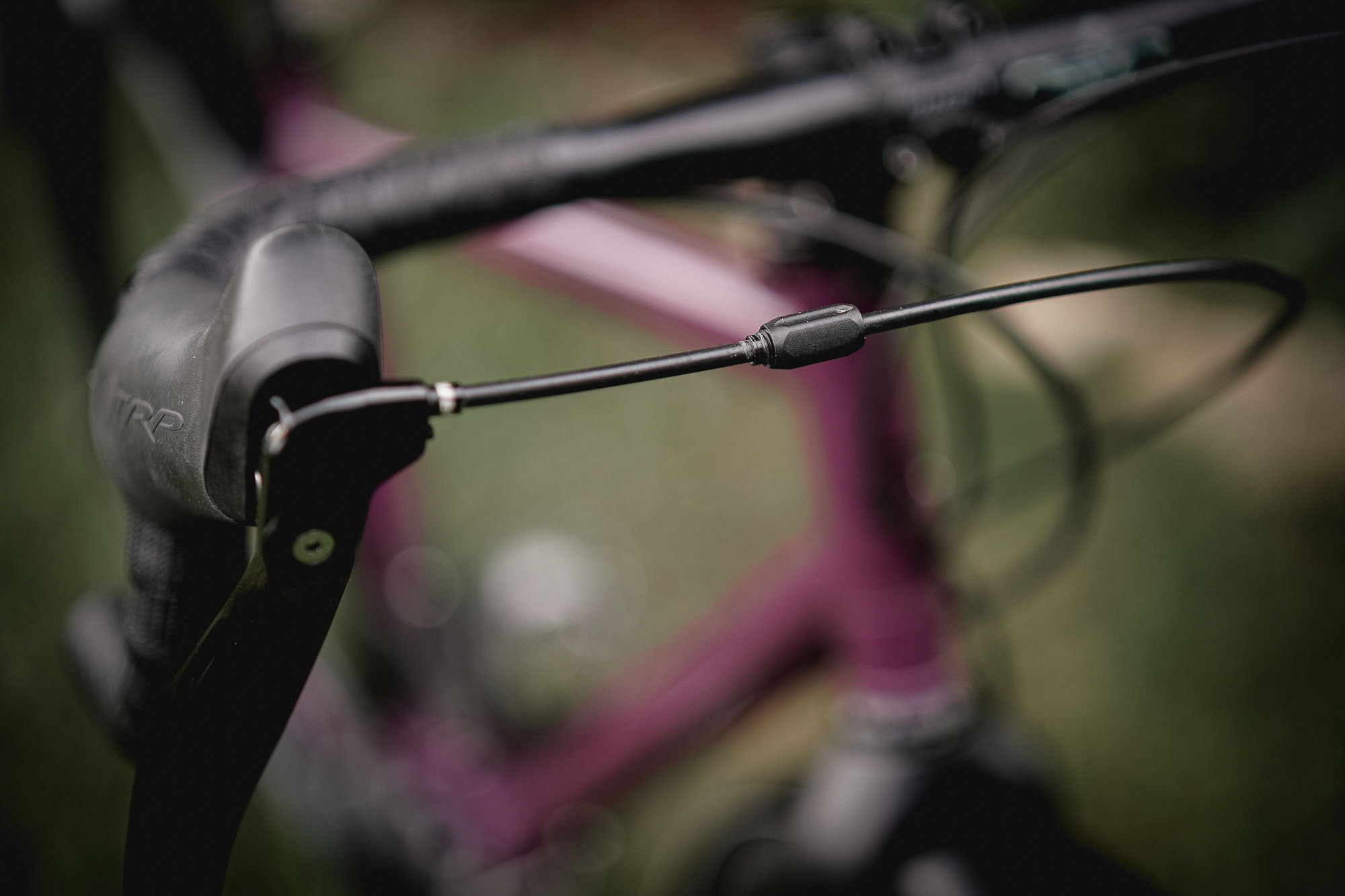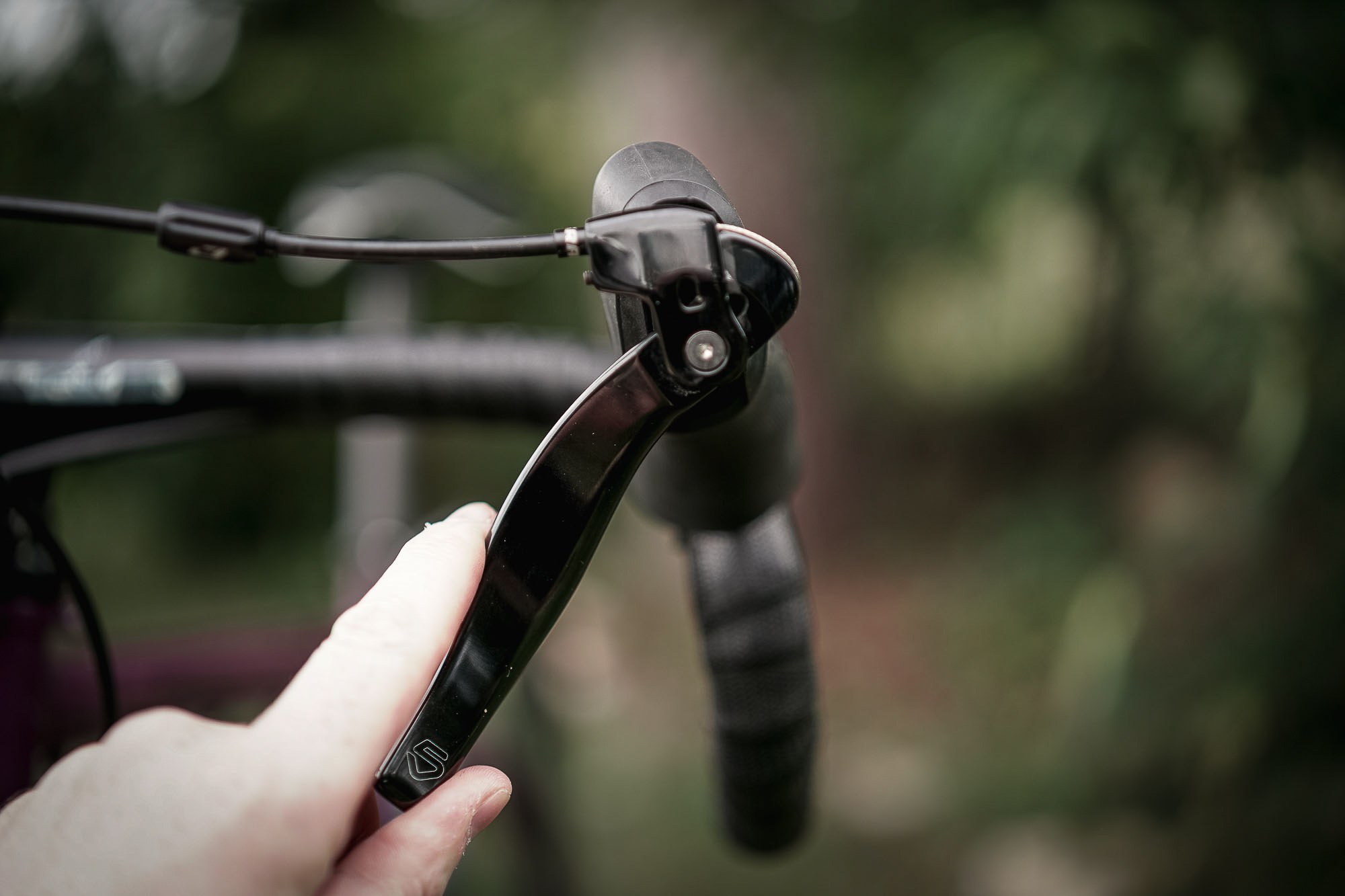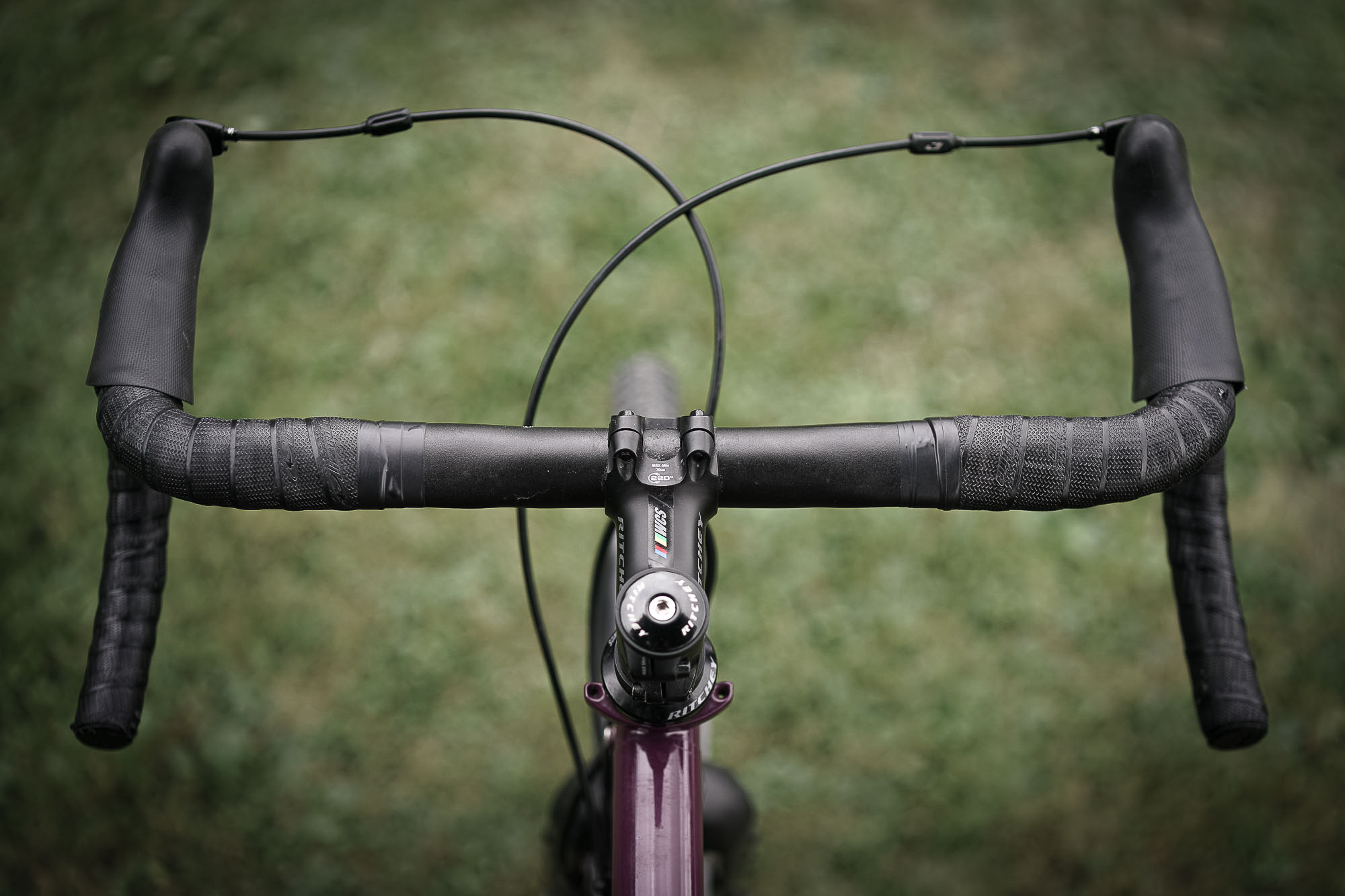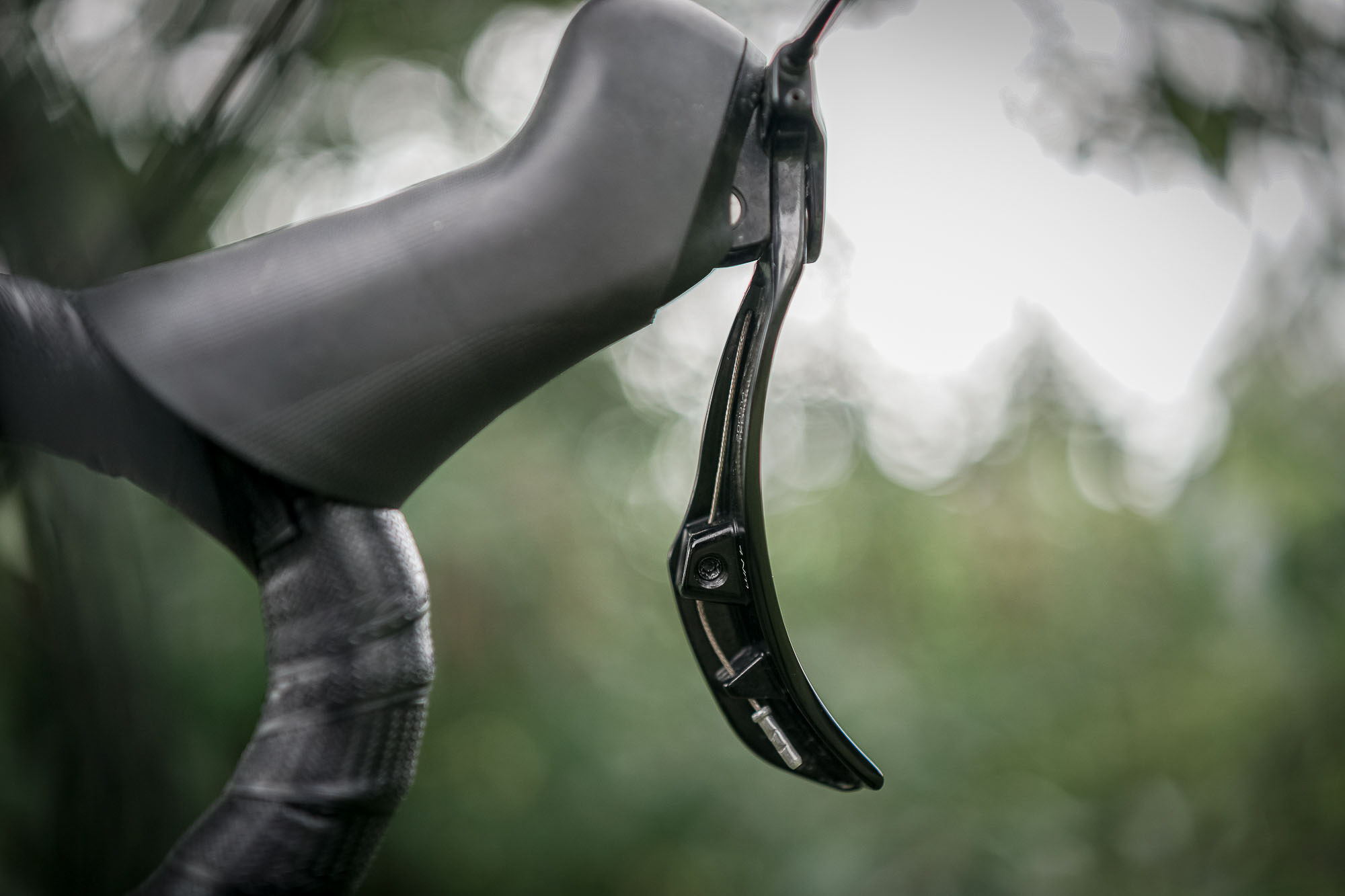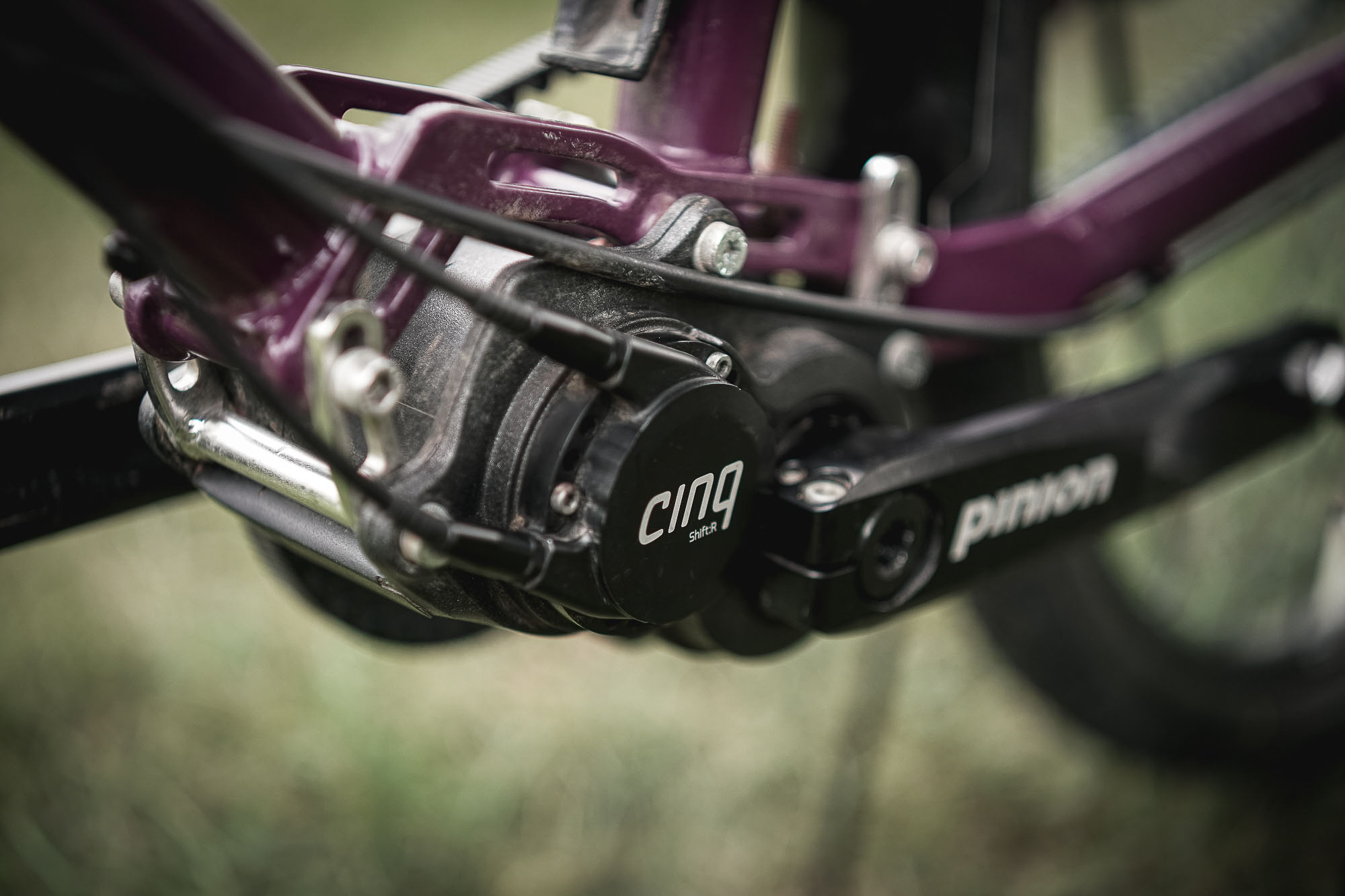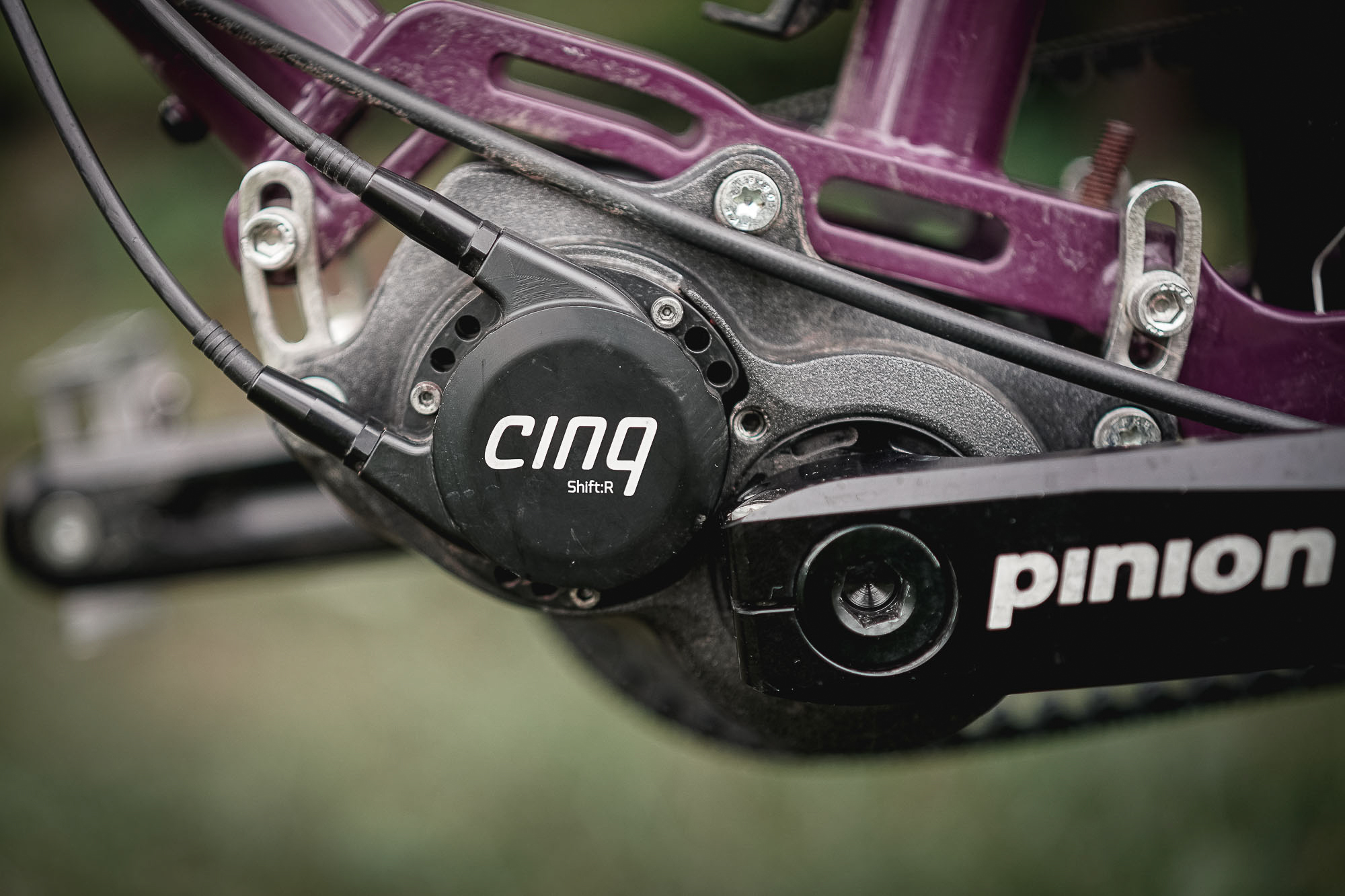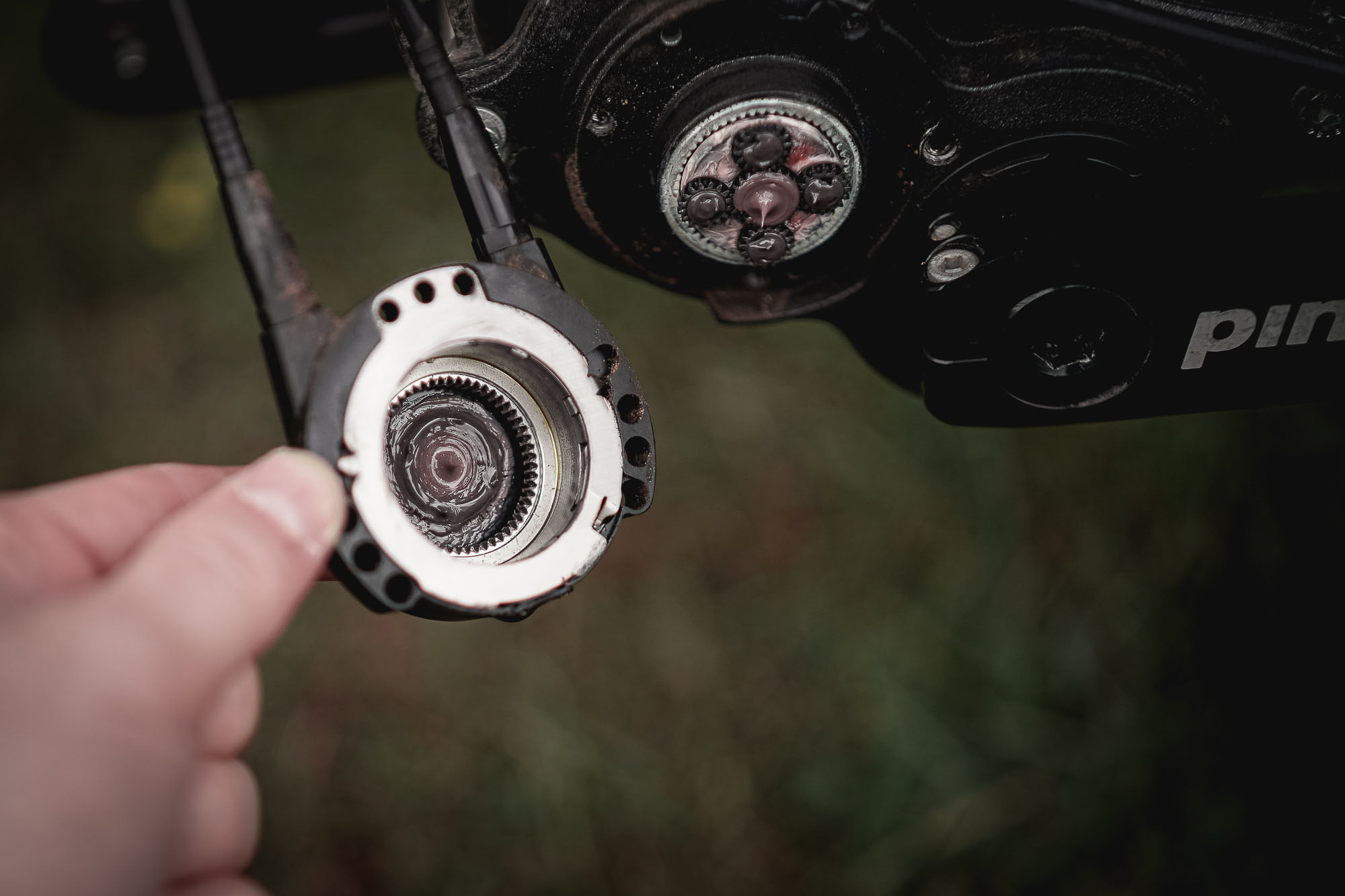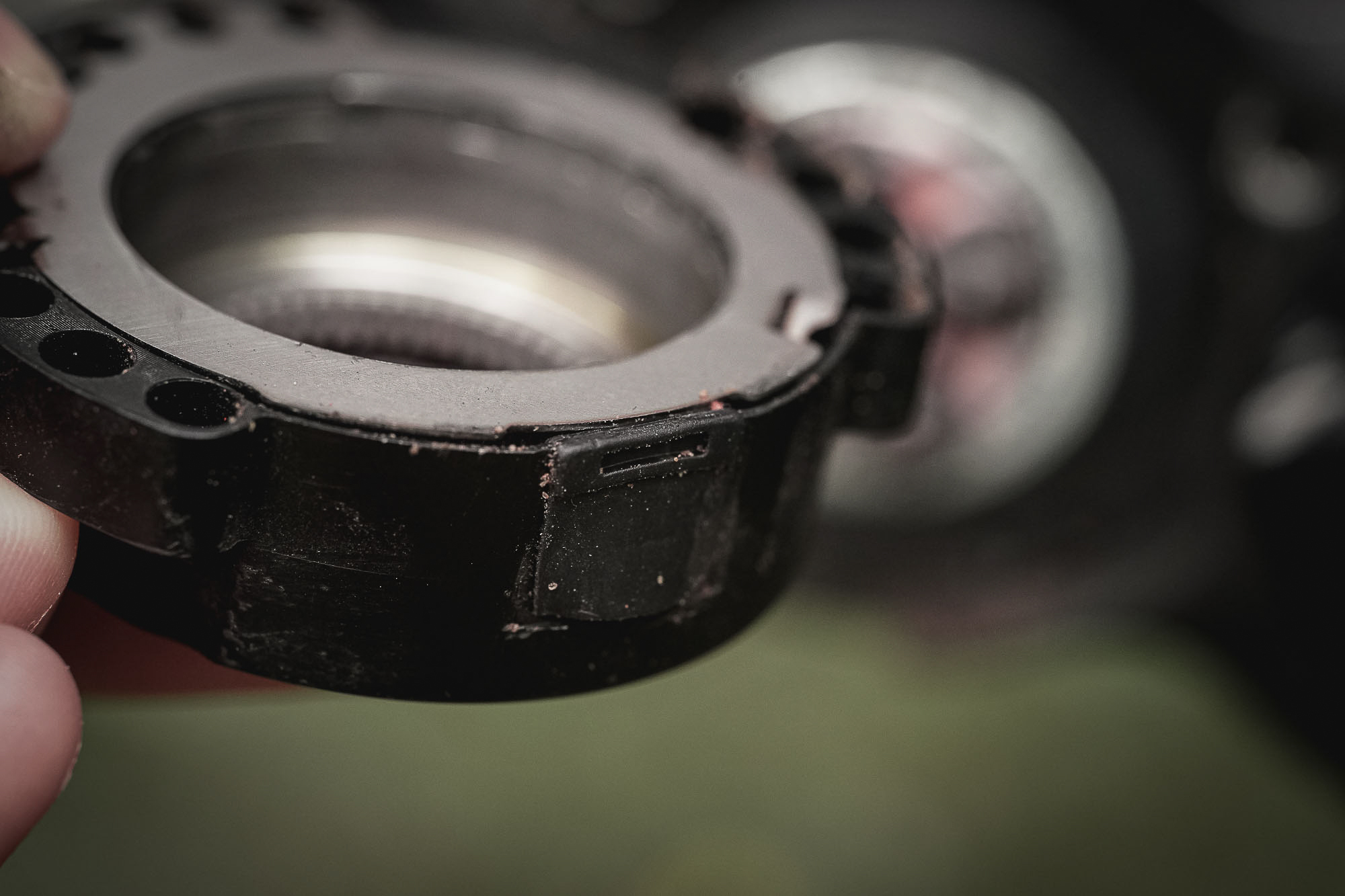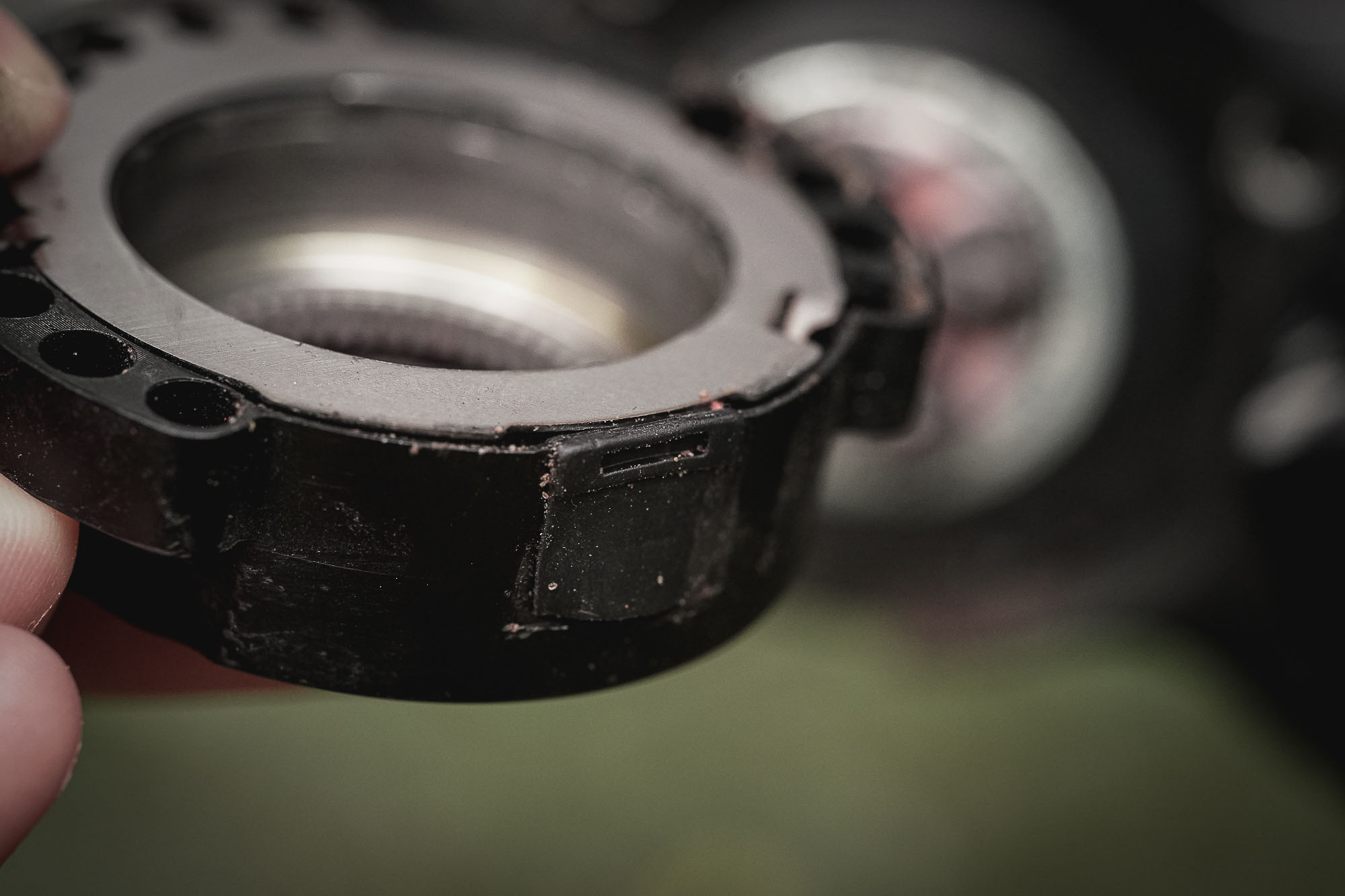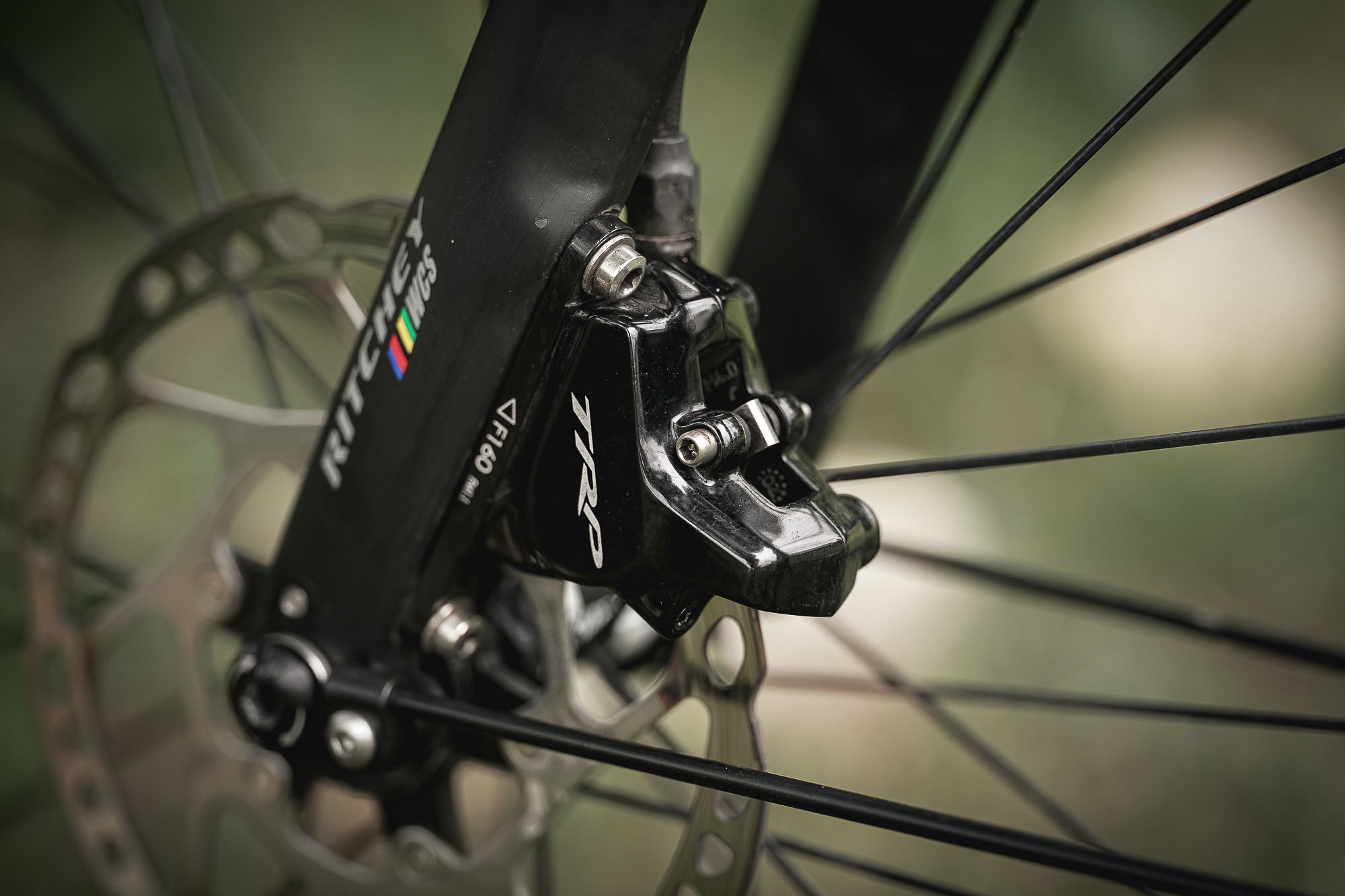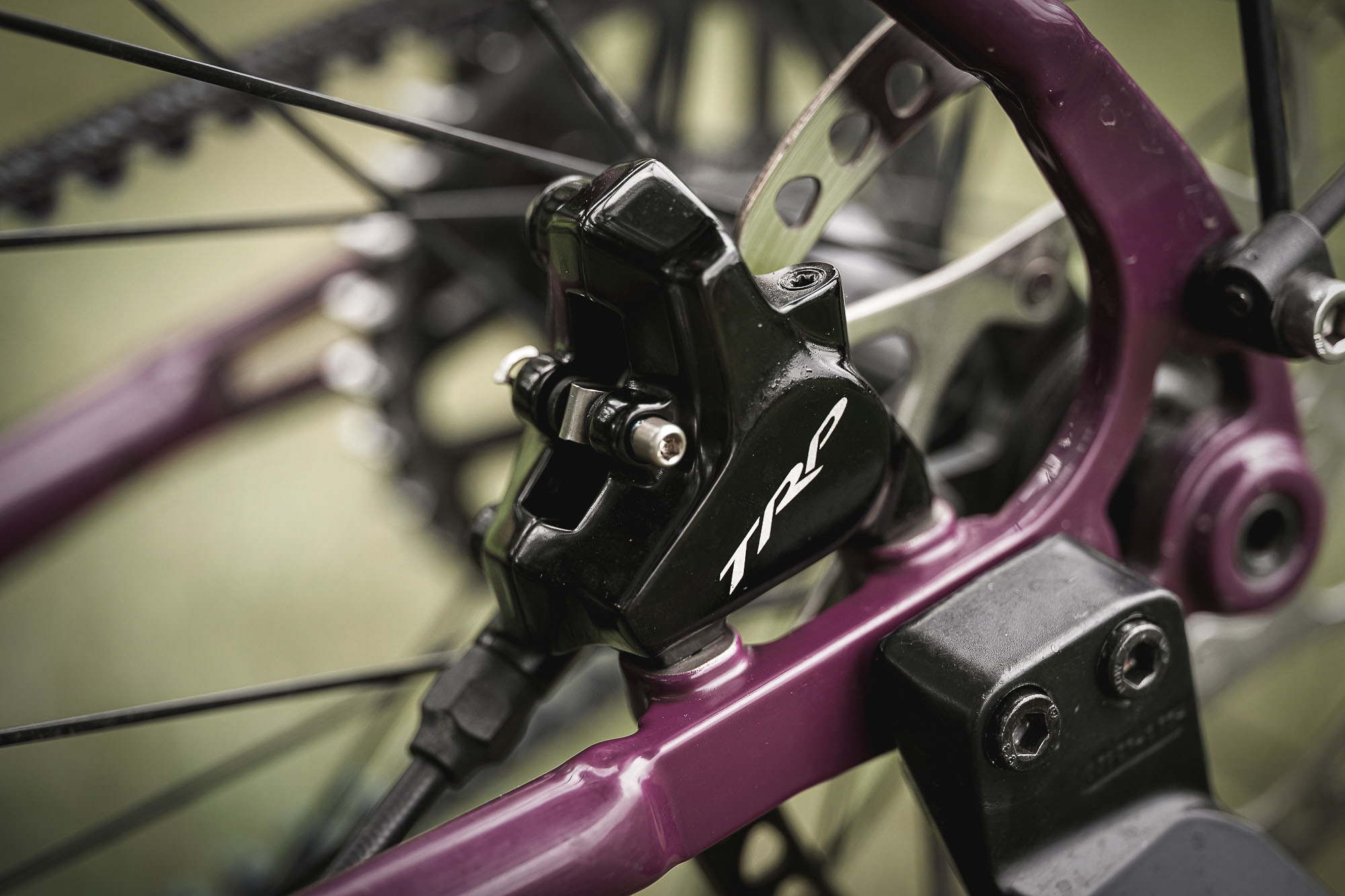Drop-bar bikes equipped with Pinion gearboxes are still a niche within a niche, but bicycle industry translator and occasional wordsmith Damian Bradley believes they’re an excellent choice for reliable, all-season gravel bikes. In this deep dive, Damian looks into the fine details of the industry’s first drop-bar specific Pinion shifting system, reflecting on his time commuting, bikepacking, and exploring Black Forest gravel roads with the Shift:R Road for Pinion by Cinq/Tout Terrain.

The OG Drop-Bar Pinion Shifter
Some bike builds stick with you forever. One of mine is a bike I completed in December 2018 – a pre-production matte black Tout Terrain Scrambler Xplore GT gravel bike with a prototype of the Cinq Shift:R Road for Pinion shifting system. Cinq, previously Tout Terrain’s OEM/House brand, was the first drop-bar system to offer a brifter-like interface for shifting and braking with a Pinion. I remember my first ride on that bike after finishing the build in the Tout Terrain workshop: a winter storm and some black ice resulted in three crashes, a sore hip, and some deep scratches on the prototype brake levers. Despite the scrapes and bruises, the shifting didn’t skip a beat, and that first ride solidified my belief in the potential of the system. Combining classic drop-bar ergonomics with a Pinion gearbox and a Gates belt would surely open a whole world of possibilities for gearbox gravel riders.
A few months after that ride, as part of my role in the marketing department at Tout Terrain, I helped launch the Shift:R Road for Pinion with a Kickstarter campaign which went live at NAHBS 2019 in Sacramento. I was sweating billets when I pushed the “Launch Project” button in the hallway outside the men’s room. Since then, my wife and I have racked up a combined 30,000 km or so on Shift:R Road for Pinion systems on multiple bikes and various configurations: commuting, gravel riding, bikepacking, and under-biking on trails that drop-bar bikes (and these components) have no business being on. Since the launch, the gravel cycling landscape has certainly changed, but the industry’s drop-bar Pinion journey is far from over.

Cinq or Swim?
When I parted ways with Tout Terrain in 2021 the shifters were still being produced under the Cinq name, but since then, the Shift:R Road for Pinion has switched to being branded with Tout Terrain logos. The system is composed of TRP Hylex brake levers with a modified lever blade mated to a ratcheting shift-mechanism, the Shift:R Box. The box attaches to a Pinion C-Line gearbox and allows the levers to pull cable in either direction. This is the same box found on the recently released trigger shifters from Tout Terrain.
Some of you may be familiar with the TRP Hylex brake set, which include hydraulic levers paired with Hylex RS flat-mount calipers. These have been sold for years (also with post-mount calipers) as a singlespeed hydraulic brake system.
So how does the system as a whole function in real-world conditions? Can it compete with the latest derailleur drivetrains and gearbox shifters?

At the Bars
The integration of the custom lever paddle into the Hylex lever body is well done, and a smart solution which allows Tout Terrain to bring shifters to market without having to design and manufacture a complete shifter and brake lever, along with all the plastic bits involved. The levers/blades themselves are attached to the body using a bolt and bushing that act as a pivot. Actuating the levers inward toward the stem pulls the cable around the pivot with a unique cam shape. The shifting configuration is such that the lever in one hand shifts into an easier gear and the lever in the other hand shifts into a harder gear. Which hand shifts in which direction can be set up by the user – I always had my right shifter shifting into an easier gear and my wife had it set up the opposite way. That made for some hilarious cursing when we swapped bikes.

At the ‘Box
Shifting attention to the Shift:R Box, you can see that the cables actually run “backwards” from the gearbox to the shifter. The metal cable-end is at the gearbox, and the cable is clamped by a grub screw at the levers. Nobody said you can’t do it this way. It is a novel solution. Installing the Shift:R box is dirt simple: thread the cables through the box, position it on the gearbox, and affix the three bolts. The build quality is excellent; the shifting and ratchet mechanisms in the Shift:R box are impressively machined, though I do take exception to the soft rubber seal which covers the access port to the cable ends. It is functional but flimsy.

The Look: Alien
Where conversations around the Tout Terrain system tend to get a little spicy is the shifter cable “antennae” which exit the shifters perpendicular to the lever body. While this is a very functional configuration, it brings back memories of early Shimano road bike levers which share this design “feature”. While I admit I also strongly prefer the look without them, the antennae were quickly forgotten during daily riding. It is also worth noting that I decided to keep my housings a bit longer than normal so I could route the cables around the front of my Outer Shell handlebar bag. This worked like a charm.
You might also notice the long brake lever bodies looking at the bike from the side, or while in the cockpit. The Shift:R Box, by contrast, is extremely compact, nestling itself next to the gearbox and improving upon the stock plastic cap offered by Pinion. With three mounting positions, the angle of the box can be adjusted to improve the cable routing so it matches better with the angle of the gearbox in relation to the downtube. Smart.

The Feel: Predator
The Cinq Shift:R Road system has different ergonomics compared to its derailleur-equipped competition. I find the long lever bodies quite comfortable, but they might not be for everyone. Their shape lengthens the effective reach between the saddle and the levers, stretching things out a bit. There’s also very little of the vertical bump or “hook” as you see on GRX Di2 shifter-brake levers, for example. The grips do offer a good platform to hold onto in rough terrain, and I found them comfortable even on multi-day tours. The rubber hoods could be a bit more firmly affixed though, they lack complex molding and interfacing with the plastic body. The brake levers allow for a lot of reach adjustment, which is great for those with stubby fingers or smaller hands. The lever finish is gloss black without any kind of texture for extra grip, which didn’t cause any issues, but isn’t especially confidence-inspiring in wet or rainy conditions.
Another ergonomic quirk at the levers is the amount of fore-aft play around the shifter’s pivot bushing. While this doesn’t affect performance, it can be irksome and takes away from the perception of quality of the product…especially given the price point. Whether it was a cost-issue or a design decision (the lack of bearing means virtually no drag), it’s something you just have to live with.

The Performance: Fast Shifting
The Shift:R box ratchet mechanism is intricately designed, with quality materials and tight tolerances, and the performance reflects this. The lever cam shape and resulting cable pull allows you to shift two gears with a single lever throw. Feedback is extremely positive; shifts are snappy, accurate, and fast. The shifter return spring could be a bit more confident though. Given the even 17.7% gear spacing of the Pinion c1.12 gearbox, shifting a single gear is sufficient in many situations and a single lever throw has you shifting more than 35% gear spread. Rowing through the entire range is fast, especially considering you can do so while coasting or stopped. Shifting without pedaling is an advantage of the Pinion system that doesn’t get enough attention. It’s a huge plus in transitions from downhill to uphill, or while stopped with a loaded bike. Pinion will state that you “can” shift under a bit of load, but with such responsive shifting and a little coordination, you shouldn’t really have to. After years using the system I had no issues timing my shifts to match my pedal power output. During hard sprints I could shift just as, if not more, accurately and reliably than on my GRX Di2 bike. It’s that good.

The Performance: Slow Braking
Where things start to go downhill (especially on the downhills) is the brakes. They feel wooden and lack both the initial bite and absolute stopping power you’d hope for on, for example, a burly adventure bike. They were absolutely fine for commuting. The brakes are severely lacking when stacked up against the latest series brakes. While I suspect that better brake pads could improve performance somewhat, I simply never got around to swapping out the pads for a premium option. On steeper, longer, or rougher descents (with or without bikepacking bags), there were some harrowing moments where the brakes just didn’t have the stopping power to slow me down confidently. I always made it to the bottom, but my hands and forearms paid the price, and I can’t help but wonder how a less-experienced rider would have fared in such a scenario. On the maintenance side, I found bleeding the brakes finicky, and rotor-pad clearance was always tight. All in all, the experience of slowing down left much to be desired.

Final Thoughts
Tout Terrain really created something special. More than five years ago they launched a new era, a shifting system that elevated the gearbox experience for drop-bar riders. All the advantages of Pinion gearboxes and belt drives could now be had without major compromises in handling and control. The Cinq/Tout Terrain system has been rock solid for both my wife and I over numerous bike builds. In all that time, a little cleaning and a few drops of viscous oil in the shift mechanism at the same time as the annual Pinion oil change was all that was required to keep things shifting swiftly and smoothly. The performance has been great. While I was never really happy with the brakes (or, to be honest, the shifter antennae), I always got by. The virtues of the Pinion and belt, namely the gear range, the lack of maintenance, far, far outweighed any shortcomings of the system as a whole.
As part instigator, and fully committed gravel gearbox rider, it is exciting for me to see that the competition is starting to heat up. HiLite Bikes has their mechanical HiBox (now in its second iteration) which uses Shimano shifter-brake levers, and of course Pinion has released their own Smart.Shift electronic shifting system with TRP, which I am currently riding on a Nicolai Argon GX GPI. Even Tout Terrain have started offering the Pinion Smart.Shift on their bikes, which begs the question: Is there even a future for mechanical drop-bar gearbox solutions like the Shift:R Road?
Pros:
- Proper drop bar shifting: No awkward split handlebars or twist shifters
- Excellent build: The levers and Shift:R box have proven themselves reliable over the years.
- Exceptional shifting performance: The shifting is fast, precise, and tactile, with the ability to shift two gears at once. It is well suited to gravel riding and unpredictable terrain.
- Unique Ergonomics: Comfy (for me) grips with lever-reach adjustment for smaller hands.
- Price: currently cheaper than electronic configurations
Cons:
- Cable antennae: visually intrusive and remind Gen X’ers how old they are.
- Brake Performance: Calipers lack pad clearance, initial bite, and maximum stopping power, reducing confidence during steep, technical, or loaded descents.
- Lever play and Shift:R dust cap: These detract from the otherwise excellent build quality.
- Unique ergonomics: Long, flat lever shape increases reach and won’t suit everyone
- Competition: There are some new players in town


